

CFORCE naturally alkaline water





HYDRATE PROPERLY
Naturally filtered through volcanic rock, CForce alkaline water is dated back 23,000 years - to the last Ice Age. The preservation of its essential minerals and naturally high pH gives CForce its delicious, smooth taste.



America ’ s Naturally Alkaline Water
Owned and run by Gena & Chuck Norris, CForce water emerges from an aquifer, deep underneath their Lone Wolf Ranch. CForce alkaline water prides itself on quality — from the pristine water inside to the premium packaging outside.
CForce is also a force of good. In looking for new ways to raise money for Chuck and Gena’s non-profit, KickstartKids, CForce Bottling Company was founded with that very mission. A portion of proceeds benefit Kickstart Kids: a program that supports at-risk middle and high schoolers by providing martial arts instead of P.E. alongside extracurricular classes, events and competitions. Kickstart Kids is an award-winning, in-school character development program that uses karate to teach lifechanging values and self-confidence to youth.




WHAT’S NEXT IN CONVENIENCE AND FUEL RETAILING
COUCHE-TARD’S OUTGOING CEO BRIAN HANNASCH AND INCOMING CEO ALEX MILLER TALK EXCLUSIVELY WITH CONVENIENCE STORE NEWS ABOUT THE TRANSITION













THE RISING VALUE OF VALUE



















PREVENT UNDERAGE SALES
OF TOBACCO PRODUCTS
Ensure that retail remains the most trusted place to responsibly sell tobacco products.
Did you know the average number of FDA compliance checks per month are approaching pre-COVID-19 levels?
In 2023, as of 9/30/23, the FDA conducted 9,381 compliance checks per month, which was an uptick from previous years.*



*Source: FDA CTP Violation Rate analysis was completed using publicly available raw data posted online at fda.gov.
Calculations of Total Compliance Checks and Violation Rates were computed by AGDC based on Decision Data published. Inspections data FFY 2019 - 2023
Modernize and simplify the ID check process with AVT, helping to reduce the likelihood of selling tobacco products to underage individuals
Improve ID check rates at a store and individual employee level, with We Card™ Training, available for Free via AGDC
State and Federal Law
Summaries and additional resources via the We Card™ resource center
Reinforce your sales associates’ understanding of ID check requirements and policies with Mystery Shop incentives
Personalization+ provides personalized value offers on PMUSA, USSTC, and Helix products to Retailers’ select loyalty IDs
Allows select loyalty IDs to receive ATOC offers right through your retailer app










Altria Tobacco P+ offers are based on ID
Altria Tobacco Operating Companies’ (ATOCs’) P+ offers are based on loyalty ID purchase history























Stackable offers with ATOC Price and offers
Stackable offers with existing ATOC Price Promotions, including multipack and loyalty offers










ENHANCE YOUR LOYALTY PROGRAM FOR YOUR BOTTOM LINE











Personalization+ gives Digital Trade Program Tier 3 participants the ability to provide additional value on ATOC products to select loyalty IDs through your retailer app by using personalized value offerings and content.

Contact your AGDC Representative to learn how Personalization+ can help enhance the digital experience of your ATCs 21+.

People First
Couche-Tard’s emphasis on culture should be emulated throughout the industry
CULTURE IS SOMETHING Alimentation
Couche-Tard Inc.’s leaders take very seriously.
I found that out recently when I had the opportunity to sit down with outgoing CEO Brian Hannasch and incoming CEO Alex Miller for an exclusive interview about the leadership transition (see page 34). During our 20-minute video chat, the word “culture” was mentioned by Hannasch and Miller a total of 16 times.
Company culture is defined as the shared values, attitudes and practices that shape the collective identity of an organization. For Couche-Tard and its 149,000 team members spread out across 31 countries and territories, there are four values they live by:
One Team: We work together to make it easier for our customers and colleagues. We stay humble and celebrate shared successes. We have fun and care for each other.
Do the Right Thing: We act with honesty and integrity. We are inclusive: we treat each other, our customers and our suppliers with respect. We strive towards a cleaner, safer, equitable workplace and planet.
Take Ownership: We treat the business as our own. We seek out problems, act quickly to solve them and deliver better results. We take responsibility and, when we make mistakes, we learn from them.
Play to Win: We challenge ourselves to play offense, not defense, which means we need to be quick and innovative. We show up every day ready and committed to make an impact using our talents and hard work.
EDITORIAL EXCELLENCE AWARDS (2016-2024)


2021 Jesse H. Neal National Business Journalism Award Finalist, Best Infographics, June 2021
2018 Jesse H. Neal National Business Journalism Award Finalist, Best Editorial Use of Data, June 2017
2023 American Society of Business Press Editors, National Azbee Awards
Silver, Data Journalism, January/April/June 2022
2023 American Society of Business Press Editors, Upper Midwest Regional Azbee Awards Gold, Data Journalism, January/April/June 2022
Bronze, Diversity, Equity and Inclusion, March 2022
2016 American Society of Business Press Editors, National Azbee Awards Gold, Best How-To Article, March 2015 Bronze, Best Original Research, June 2015
2016 American Society of Business Press Editors, Midwest Regional Azbee Awards Gold, Best How-To Article, March 2015 Silver, Best Original Research, June 2015

2020 Trade Association Business Publications
Intl. Tabbie Awards
Honorable Mention, Best Single Issue, September 2019
2016 Trade Association Business Publications
Intl. Tabbie Awards Silver, Front Cover Illustration, June 2015
Being a global company — and one that has acquired just shy of 8,000 convenience stores in the last decade — it takes hard work to protect and maintain this culture.
During his 10-year tenure as CEO, Hannasch did his part by “getting rid of jerks,” in his words. “We’ve had some people that have been absolute rock stars, but they couldn’t treat people right. … It’s a cancer that needs to go away,” he told me during our interview.
He also worked hard at spending much of his time “in the business” rather than in his office, visiting each of the company’s business units at least twice a year, in addition to special gatherings. “We want a culture of being in the stores, appreciating the stores and people first,” he said.
Now, it is Miller’s turn to do his part to keep Couche-Tard’s culture intact. And he is ready. Having spent the last nearly 13 years working in various roles within the organization, Miller feels he really does know the culture and the things that make Couche-Tard successful. “I’ve always said that when I’m doing well, people don’t need me very much because they’re making decisions, they’re leading their business, they feel empowered. … To me, that is our culture, and we’ll just continue to work to really protect that and empower that even further,” he said.
Given Couche-Tard’s success, I would encourage all companies in the industry to consider whether they have a company culture and, if so, what it is and whether all of their employees are aware of that culture and living it day in and day out. For those that do not have a company culture in place, what are you waiting for?
For comments, please contact Linda Lisanti, Editor-in-Chief, at llisanti@ensembleiq.com.

2023 Eddie Award Honorable Mention, Folio: magazine
Business to Business, Retail, Full Issue, September 2022
Business to Business, Retail, Single Article, March 2023
2022 Eddie Award, Folio: magazine
Winner, Business to Business, Retail, Single Article, March 2022
Winner, Business to Business, Food & Beverage, Series of Articles, October 2021
Honorable Mention, Business to Business, Retail, Single Article, September 2021
2020 Eddie Award, Folio: magazine
Business to Business, Retail, Series of Articles, September 2019
2018 Eddie Award Honorable Mention, Folio: magazine
Business to Business, Retail, Website
Business to Business, Retail, Full Issue, October 2017
Business to Business, Editorial Use of Data, June 2017
2017 Eddie Award, Folio: magazine
Winner, Business to Business, Retail, Single/Series of Articles, May 2017
Honorable Mention, Business to Business, Retail, Single/Series of Articles, June 2016
2016 Eddie Award Honorable Mention, Folio: magazine
Business to Business, Retail, Full Issue, October 2015
Business to Business, Retail, Single/Series of Articles, August 2015
EDITORIAL ADVISORY BOARD
Laura Aufleger OnCue Express
Richard Cashion Curby’s Express Market
Billy Colemire Stinker Stores
Robert Falciani ExtraMile Convenience Stores
Jim Hachtel Core-Mark
Chris Hartman Rutter’s
Faheem Jamal CPD Energy Corp./ Chestnut Markets
Ruth Ann Lilly GPM Investments LLC
Vito Maurici McLane Co. Inc.
Jonathan Polonsky Plaid Pantries Inc.
Greg Scriver Kwik Trip Inc.
Roy Strasburger StrasGlobal







Will
Promos Be Enough to Lift Sales Out of the Doldrums?
Stressed-out consumers are cutting back across the board

IF YOU ASK AMERICANS what they think of the economy, they’d tell you things are not so good. Forget the recent 1,000-point crash of the stock market, they are stressed out by everyday budget concerns. Pocketbooks are stretched to meet daily needs for food and shelter. Continued inflation is making things even worse.
According to The Conference Board, consumer confidence has been stagnant for the past two years. Its most recent index showed consumer confidence in the Present Situation declined slightly last month, while the Expectations Index improved very slightly.
Retailers are going to continue to scramble until the federal government gets inflation under control, while lowering interest rates and unemployment.
“Uncertainty reigns across groups,” said the independent think tank. “While views of the labor market remain largely positive, consumers are still concerned about elevated prices and interest rates — things that may not improve until next year.”
Interestingly, confidence improved among consumers under the age of 35 and those 55 and older, while the 35-55 age group saw a decline in confidence. Over the past six months, confidence was highest among the younger consumers.
This sluggish consumer confidence is one of the main reasons for the slower sales many U.S. companies are experiencing. Restaurant chains have certainly reacted to flagging consumer spending caused by inflation and higher prices. We see chains like McDonald’s and Burger King launching value meals to compete with Wendy’s $5 Biggie Bag. Sonic recently unveiled a new Fun 99 Menu of items for $1.99 each, and White Castle for the first time is slashing the price of its traditional sliders.
The convenience store industry experienced a 4.7% sales decline in 2023, according to the latest Convenience Store News Industry Report. Consumers are making fewer trips to c-stores — the percentage of shoppers who visit a c-store once a month is down 4 percentage points from a year ago, according to CSNews’ annual Realities of the Aisle Study. And most recently, CSNews’ 2024 Midyear Report Card showed that key convenience store product categories have seen increasingly negative results through the midpoint of 2024.
The majority of the major c-store categories saw both dollars and units decrease from January through June, with the remainder posting higher dollar sales but lower unit volume. The biggest unit volume declines are coming from cigarettes (down almost 10%), candy (down 8.4%), salty snacks (down 6.1%) and other tobacco products (down 4.5%). U.S. consumers may have reached their limit in what they can or will pay for c-store products.
Like the restaurant industry, it appears c-stores are already battling this trend with aggressive sales promotions of their own. Recent examples include Wawa’s free drinks program for teachers in Florida and Alabama, Krispy Krunchy Chicken’s $4 value meal (outdoing the fast-feeders by a buck), and several deals and cashback offers from 7-Eleven Inc. I expect to see more c-store retailers focus on their loyalty programs and digitals offers in the weeks ahead.
Will that be enough? It’ll help, but retailers are going to continue to scramble until the federal government gets inflation under control, while lowering interest rates and unemployment.
For comments, please contact Don Longo, Editorial Director Emeritus, at dlongo@ensembleiq.com.


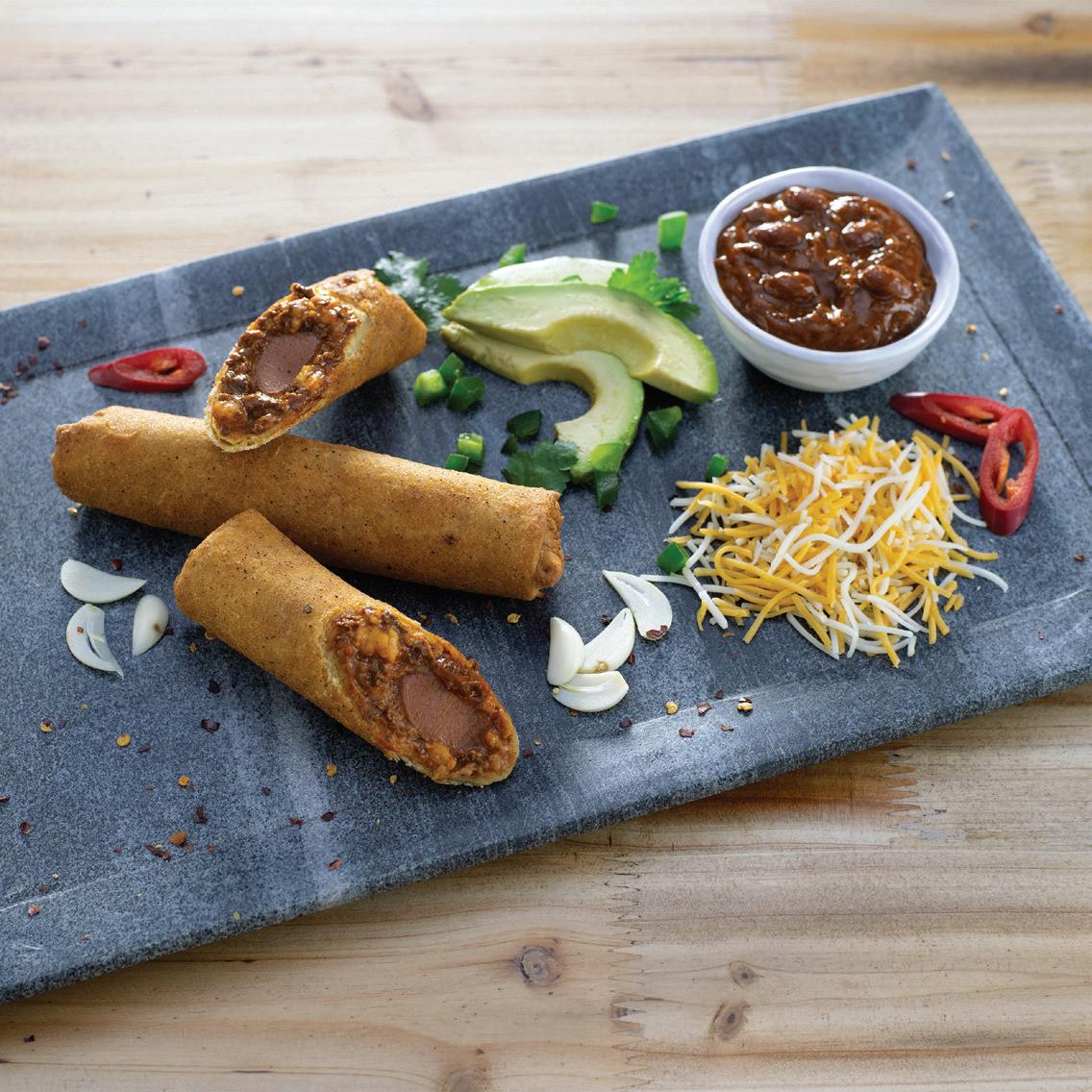




Savory Sausages


























FEATURES
COVER STORY
34 Passing the Torch






Couche-Tard’s outgoing CEO Brian Hannasch and incoming CEO Alex Miller talk exclusively with Convenience Store News about the transition.
86 The Rising Value of Value
As consumers look for more ways to stretch a dollar, it’s increasingly important for c-store retailers to highlight the value they offer.
98 The Future of Fueling
From biofuels to electric vehicles, the forecourt continues to evolve.
106 Achieving Operational Excellence
Training, mystery shops and self-service technology help improve store-level execution.















E DITOR’S NOTE








4 People First Couche-Tard’s emphasis on culture should be emulated throughout the industry.
VIEWPOINT
6 Will Promos Be Enough to Lift Sales Out of the Doldrums? Stressed-out consumers are cutting back across the board.
LEARNING LAB
116 Opportunities to Improve Communication Convenience Store News’ second Future Leaders Learning Lab webinar provided practical techniques to become a more effective communicator.
AN EYE ON D&I
118 Respect Is at the Core of Love’s Award-Winning Culture
Employee resource groups and culture tours keep the company connected.
STORE SPOTLIGHT
122 Cozy Convenience
Rusty Lantern Markets creates its next generation of stores, featuring unexpected elements.
INSIDE THE CONSUMER MIND
150 Comparatively Speaking
Price is driving c-store customers to shop around for snacks and beverages.




CATEGORY MANAGEMENT
TOBACCO
44 Stopping the Next Prohibition Generational tobacco bans are setting precedents that the industry is attempting to halt.
ALCOHOLIC BEVERAGES
48 A Category With Unique Challenges The c-store wine and liquor business can be tricky, but there are ways to grow market share.
FOODSERVICE
80 A Guiding Light Convenience Store News’ 2024 Technology Leader of the Year leans into tech as the foundation of its business strategy.


52 Finding Your Secret Sauce in Convenience Foodservice Highlights from the 2024 Convenience Foodservice Exchange event in Tampa.
GENERAL MERCHANDISE
70 Anything But General Taking a creative approach to the general merchandise category can grow sales and margin.
8550 W. Bryn Mawr Ave., Ste. 225, Chicago, IL 60631 (773) 992-4450 Fax (773) 992-4455 WWW.CSNEWS.COM
BRAND MANAGEMENT
SENIOR VICE PRESIDENT-GROUP PUBLISHERUS GROCERY & CONVENIENCE GROUP Paula Lashinsky (917) 446-4117 - plashinsky@ensembleiq.com
EDITORIAL
EDITOR-IN-CHIEF Linda Lisanti llisanti@ensembleiq.com
EXECUTIVE EDITOR Melissa Kress mkress@ensembleiq.com
SENIOR EDITOR Angela Hanson ahanson@ensembleiq.com
MANAGING EDITOR Danielle Romano dromano@ensembleiq.com
ASSOCIATE EDITOR Amanda Koprowski akoprowski@ensembleiq.com
EDITORIAL DIRECTOR EMERITUS Don Longo dlongo@ensembleiq.com
CONTRIBUTING EDITORS
Renée M. Covino, Tammy Mastroberte
ADVERTISING SALES & BUSINESS
ASSOCIATE BRAND DIRECTOR & NORTHEAST SALES MANAGER Rachel McGaffigan - (774) 212-6455 rmcgaffigan@ensembleiq.com
ASSOCIATE BRAND DIRECTOR & WESTERN SALES MANAGER Ron Lowy - (330) 840-9557 - rlowy@ensembleiq.com
ACCOUNT EXECUTIVE & CLASSIFIED ADVERTISING Terry Kanganis - (917) 634-7471 - tkanganis@ensembleiq.com
DESIGN/PRODUCTION/MARKETING
ART DIRECTOR Lauren DiMeo ldimeo@ensembleiq.com
PRODUCTION DIRECTOR Pat Wisser pwisser@ensembleiq.com
SENIOR MARKETING MANAGER Krista-Alana Travis ktravis@ensembleiq.com
SUBSCRIPTION SERVICES
LIST RENTAL mbriganti@anteriad.com
SUBSCRIPTION QUESTIONS contact@csnews.com
CORPORATE OFFICERS


SERVICES
74 Keeping the Revenue Rolling In-bay automatic, touchless washes and subscriptions are dominating the c-store car wash space.
CHIEF EXECUTIVE OFFICER
Jennifer Litterick
CHIEF FINANCIAL OFFICER Jane Volland
CHIEF PEOPLE OFFICER Ann Jadown
CHIEF STRATEGY OFFICER Joe Territo
CHIEF OPERATING OFFICER




Derek Estey












Experience a sales avalanche with the newest limited time offering from Longhorn— the No. 6 Smokeless Brand in U.S. Convenience for total volume.*





































FIRST SHIP SEPTEMBER 3rd USTOM S U S T O M 2X


























*Source: MSA Distributor Shipments - Chew, Moist Snuff, Nicotine Pouches, Snus combined 6/30/24
** Source IRI total US convenience, 26 weeks 1-12-24

See LonghornMoistSnuff.com/Rewards for terms and conditions. 21+. Min. purchase of 18 participating products required to claim reward. Limit of 60 codes per account per month.







TOP VIEWED STORIES
Casey’s Looks to Shake Up Merchandising Mix
The retailer kicked off the first Casey’s Innovation Summit, a competitive event focused on finding brands with new innovative products. Food and beverage companies can apply online for a possible invitation to the late October summit.
Buc-ee’s to Start Construction on First Ohio Location
Located at 8000 State Highway 235 in Huber Heights and situated near Dayton, the new store will occupy 74,000 square feet and have 100 fueling positions. Construction is expected to take roughly 18 months for a late-2025 opening.
Value-Seeking Tobacco Consumers Impact Cigarette Sales
Continued economic pressures have led many tobacco consumers to grow increasingly selective in their purchases. Data indicates they are seeking affordable alternatives such as fourth tier/deep discount cigarettes, modern oral tobacco and illicit/gray market disposable vapor products.
Mars to Acquire Kellanova
The $35.9 billion purchase will unite two iconic businesses with complementary footprints and portfolios of beloved brands. Additionally, it will expand the health and wellness umbrella for the Mars Snacking portfolio with the addition of RXBAR and NutriGrain products.
1 3 4 5 2
Six Industry Players Land on NRF’s Top 100 List
7-Eleven Inc. is the highest-ranked convenience store chain on the list at No. 20 with $27.88 billion in U.S. retail sales. Alimentation Couche-Tard Inc., parent company of Circle K, is the second-highest ranked at No. 42 with $11.76 billion in U.S. retail sales.

Five Takeaways From IDDBA 2024
Freshness was everywhere on the show floor at the 2024 International Dairy Deli Bakery Association (IDDBA) Show in Houston. In addition to trying new and innovative products, the 10,000 attendees at the 60th annual event had the chance to learn about the future of labor, taste trends and more. Key takeaways included: the changing workforce requires a change in strategy; consumers are taking a closer look at labels; “swicy” is the hottest flavor trend; and experimentation drives purchases.

Sheetz Encourages Customers to Embrace Their Inner ‘Freakz’
Sheetz Inc.’s most recent ad campaign invites customers to visit a Sheetz convenience store or place an online order guided by their inner “Freakz,” embodied in commercials as five red furry puppets meant to represent fans’ inner cravings.
“We lovingly refer to our most loyal fans as Sheetz Freakz and in turn, they wear their Freakz badge proudly,” said RTO+P, the agency behind the campaign. “The puppets represent a personification of their inner Sheetz Freakz, the craving inside to indulge in the things that make life more extraordinary; that urge that we believe we all have in us, to live outside the routine.”
For more exclusive stories, visit the Special Features section of CSNews.com.
MOST VIEWED NEW PRODUCT
Dr. Schär Gluten-Free Muffins
Dr. Schär, a gluten-free food products brand, brings to market soft-textured muffins in Classic, Chocolate and Chocolate Chip flavors. The muffins, which are shelf-stable and ready to eat, are made from a blend of premium ingredients such as barn eggs and Rainforest Alliance Certified cocoa products. The new products continue the brand’s journey toward creating a world where everyone can enjoy delicious, high-quality baked goods, regardless of dietary restrictions. Dr. Schär Muffins are available in a five-pack with a suggested retail price of $6.49.

Lyndhurst, N.J. schaer.com


















Large C-store Chains Make Regional Moves
Casey’s and Couche-Tard ink midsized acquisition deals to expand their footprints
CASEY’S GENERAL STORES INC. continues to execute on its merger-and-acquisition strategy, a core part of the company’s current strategic plan. In its latest move, the Ankeny, Iowa-based retailer entered into an agreement to acquire Fikes Wholesale Inc., owner of CEFCO Convenience Stores, in an all-cash transaction for $1.145 billion.
“During our Investor Day presentation in June of 2023, we outlined our business strategy to achieve top-quintile EBITDA growth. One of the core pillars of the plan is to grow the number of units,” said Darren Rebelez, board chair, president and CEO of Casey’s. “This acquisition will allow Casey’s to accelerate our unit growth plan with high-quality assets that, along with our recent 22-store acquisition in northern Texas, will provide an expanded presence in Texas and allow us to continue to expand in the state and region.”
Casey’s acquisition of Fikes will include 198 retail stores, a dealer network, and a fuel terminal and commissary to support the Texas stores. The purchase price includes tax benefits valued at approximately $165 million for a net after-tax purchase price of $980 million.
The transaction will add 148 additional stores in Texas, which is a highly strategic market for Casey’s, as well as 50 stores in the southern states of Alabama, Florida and Mississippi. Once completed, the deal will increase Casey’s footprint to nearly 2,900 stores.
The transaction is anticipated to close during the fourth quarter of calendar year 2024.
In another notable move this summer, Alimentation Couche-Tard Inc. reached a definitive agreement to acquire GetGo Café+Markets from Pittsburgh-based Giant Eagle Inc. The acquisition is expected to close in calendar year 2025.
GetGo, the c-store arm of the supermarket retailer, operates approximately 270 stores across Pennsylvania, Ohio, West Virginia, Maryland and Indiana. The banner has a variety of models, including open-concept stores and standalone kiosks, and features an extensive menu of made-to-order food.
“We are excited to welcome GetGo into the Couche-Tard family. As we learn more about the GetGo business, it is clear that it has built a strong and passionate customer base with high-quality stores staffed by talented and engaged teams working to deliver a great experience,” said Brian Hannasch, president and CEO of Laval, Quebecbased Couche-Tard.
As part of the transaction, Couche-Tard and Giant Eagle have agreed to maintain and partner together on Giant Eagle’s popular myPerks loyalty program.
On the same day as the GetGo deal was announced, Couche-Tard also made a nonbinding, friendly bid to acquire all outstanding shares of Tokyo-based Seven & i Holdings Co. Ltd., the parent company of Irving, Texas-based 7-Eleven Inc. Couche-Tard is currently the second-largest U.S. convenience store chain behind 7-Eleven.
Seven & i Holdings’ board of directors created a special committee to review the proposal. As of press time, the review was still ongoing.



















































































































































































































































































































Maverik Names New Lead Adventurer
Crystal Maggelet takes on the role of CEO and chief adventure guide long-term
IT’S OFFICIAL: Crystal Maggelet, chairman and CEO of Maverik’s parent company FJ Management Inc. (FJM), is the convenience store chain’s new CEO and chief adventure guide after acting as interim CEO since Chuck Maggelet retired in May.
“As beloved c-store brand Maverik — Adventure’s First Stop approaches the one-year anniversary of the close of its acquisition of Kum & Go this August, Crystal Maggelet has announced her decision to step into the long-term role of CEO and chief adventure guide,” Maverik announced in late July.
Crystal Maggelet plans to build on Chuck Maggelet’s wins for the brand while bringing a renewed focus on people, philanthropy and culture to her leadership of nearly 15,000 team members, the company said. Chuck Maggelet served in the top post for seven years.
“She’ll continue to amplify Maverik’s core values of being a Great Place to Work, a great operator for its customers and a great growth company,” Maverik stated in
its announcement. “She is currently leading the charge to deliver customers an elevated, differentiated and adventurous c-store experience through the continued growth and integration of Maverik and Kum & Go brands’ fuel, foodservice and in-store product offerings.”
Salt Lake City-based Maverik acquired Des Moines, Iowabased Kum & Go last year. Together, the two brands now serve customers through more than 840 convenience stores in 20 states from the Midwest to the West Coast.
“I am honored to lead Maverik into this exciting new chapter,” Crystal Maggelet said at an Aug. 23 event in Denver to celebrate the completion of its rebrand of Kum & Go stores to Maverik in Colorado and kick off the transformation in Wyoming. “Our acquisition of Kum & Go has strengthened our position as a leading convenience store retailer, and I am proud of the progress we’ve made in integrating the two brands. Our focus remains on delivering exceptional experiences for our customers, supporting our team members and giving back to the communities we serve.”
Crystal Maggelet brings extensive experience to her new role. She’s served on Maverik’s board of directors for 12 years. She became CEO of FJM (then known as Flying J) in 2008. Under her guidance, Maverik’s parent company has grown into a diverse portfolio of businesses, including convenience retailing, petroleum, healthcare and hospitality.

cozy convenient cocktails


Eye on Growth INDUSTRY ROUNDUP
Wawa Inc. broke ground on its first convenience store in West Virginia in mid-August. The start of construction at the Inwood, W.Va., store marks the retailer’s entry into its 14th state.
Maverik — Adventure’s First Stop continues to expand in the Mountain West region through the rebranding of Kum & Go stores. On Aug. 23, the company held a special event to celebrate the completion of its Colorado store rebrands and kick off the transformation of stores in Wyoming. To date, Maverik has completed 97 store rebrands across Colorado and Utah.


As it moved closer to debuting its first store in Michigan, Sheetz Inc. announced four more store openings planned for





the metro Detroit area. As of press time, the company expected to open its first Michigan store in late summer.
7-Eleven Inc. is mapping out a major expansion of its 7FLEET Diesel Network in 2025. Currently at 375 sites, the company plans to grow its 7FLEET network to more than 500 locations nationwide.
Buc-ee’s unveiled its newest travel center in Smiths Grove, Ky. The site, which is the retailer’s second in Kentucky, occupies 53,000 square feet and has 120 fueling positions.
Enmarket opened its first Dublin, Ga., location in late June. The 5,178-square-foot store features 16 fuel pumps, a Marketwash car wash and Enmarket’s proprietary food brand, The Eatery. It is the company’s second newly constructed store of 2024.
Love’s Travel Stops opened new locations in Rural Hall, N.C.; Baker City, Ore.; Sarcoxie, Mo.; and North Lima, Ohio. The sites are open 24 hours a day, 365 days a year. All of the locations except the North Lima center include a Tripak Express.



























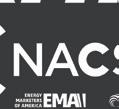




























































The retailer is also boosting its truck diesel network with the fueling option to be available at four new stores, including the first Michigan store.




WARNING: Cigar smoking can cause lung cancer and heart disease.














































































Retailer Tidbits

Pilot Co. is launching a major brand evolution with the debut of a new ad campaign, “See You Out Here.” First-ever Chief Marketing Officer Adrienne Ingoldt is leading the charge to make Pilot an iconic brand and the travel center of choice.
Chevron Corp. plans to relocate its headquarters from San Ramon, Calif., to Houston, with all corporate functions to migrate to the latter city over the next five years. Chevron Chairman and CEO Mike Wirth and Vice Chairman Mark Nelson will move to Houston before the end of 2024.
The second life of Foxtrot is set to begin with four Chicago locations. According to city liquor license applications, the chain’s new ownership plans to reopen stores in Wicker Park, Old Town, Gold Coast and Fulton Market.










Jacksons Food Stores partnered with Bounteous x Accolite and PAR Retail to launch a new customer experience platform, which includes a next-generation mobile app and web integrations, and a revamped rewards system.
Love’s Travel Stops grew its Love’s Financial offering with the acquisition of REV Capital’s U.S. transportation factoring portfolio. The deal, which included 500-plus customers, closed July 26.
The Navy Exchange Service Command entered into a license agreement with WHP Global, the parent company of Toys”R”Us, to bring the toy shop to its NEX stores. Beginning this fall, Toys”R”Us will launch at NEX Oceana in Virginia Beach, Va., followed by a location in Jacksonville, Fla.




































Jacksons also tapped Lula Commerce to create a seamless online ordering and delivery experience for the chain.



Supplier Tidbits
Philip Morris International is investing $600 million in a new, Colorado-based manufacturing facility for Zyn nicotine patches. The plant is expected to open in 2025 and will create 500 jobs.
Following its acquisition by PAR Technology, Stuzo has been rebranded as PAR Retail. The heart of PAR Retail’s success is its Wallet Steering methodology, which delivers personalized offers based on customer purchase behavior across all verticals.



Core-Mark International is transforming its category management strategy by integrating Blue Yonder Category Management solutions entirely into Blue Yonder’s SaaS, completing the digital

transformation of its space and floor offerings.
The Hershey Co. selected a newly created team, MiltonONE, from Publicis as the agency of record for the company’s U.S. candy, mint and gum, salty and protein business units. The move allows Hershey to centralize integrated media responsibilities.
Advantage Solutions entered into a strategic alliance with Swiftly. The agreement expands Advantage’s omnichannel capabilities through the integration of Swiftly’s solutions and enables personalized messaging through targeted promotions, rebates and ads both in-store and online.
Snack and jerky brand Chomps broadened its distribution and is now available in more than 1,600 convenience stores, including all Wawa Inc. locations, most Sheetz Inc. locations and FasMart/ShoreStop stores.
Flavorman opened a large-scale production facility in Louisville, Ky. The 28,000-squarefoot expansion represents an $8.5 million investment to scale up its “Beverage Campus” and facilitate the company’s capacity for bulk flavor production.




The integration into the cloud will fully digitalize its offerings, consolidate its toolset for planning staff and standardize the services offered to its customer base.
Nothing but the
Best Stuft
The foodie innovation your customers have been craving. Stuft Tots are patented, first-to-market, crispy flavor-filled hashbrowns:
• Deliciously protein-packed, with 60 calories or less per serving.
• Versatile for any time of day—breakfast, lunch, or snack.
• Quick and effortless preparation that ensures bites stay hot and fresh.
• Proven customer satisfaction and profit performance.
These filled bites can even be customized to offer your shoppers something exclusively yours.
Ready to get crispy?



Sellmorewith























Tic Tac Chewy
Ferrero North America presents Tic Tac Chewy, the company’s first sugar candy, as well as its first innovation exclusive to the U.S. market. The product will be available starting in September at select retailers and will expand nationally in early 2025. Tic Tac Chewy will come in two varieties, Fruit Adventure or Sour Adventure, each offering a mix of five fruit-based options: cherry, apple, orange, lemon and grape.
FERRERO NORTH AMERICA • PARSIPPANY, N.J. • FERRERONORTHAMERICA.COM

Jubi Plant-Based Shots

Dunkin’ 40-Ounce Bottled Iced Coffees
Dunkin’ Donuts, in partnership with The Coca-Cola Co., is bringing back its popular ready-to-drink iced coffees in a 40-ounce bottled offering. Crafted with 100% Arabica beans with approximately 120 milligrams to 380 milligrams of caffeine per 12-ounce serving, each 40-ounce multiserve bottle only needs to be shaken and poured to drink. Four varieties are available: Original, Butter Pecan, Unsweetened and the new Caramel. Dunkin’ 40-Ounce Bottled Iced Coffees have a suggested retail price of $5.99.
THE COCA-COLA CO. • ATLANTA • DUNKINANYTIME.COM
Jubi Brands launches Jubi Plant-Based Shots, a new product line formulated with premium ingredients and offering four distinct formulas: Energy, Focus, Relax and Chill. The Energy shot is intended to offer a natural and sustained boost of vitality for those needing an extra push during hectic days, while the Focus shot is made to provide consumers with heightened alertness. The Relax shot features a calming blend to promote tranquility and reduce stress, and the Chill shot is aimed at those unwinding at the end of the day.
JUBI BRANDS • BEDFORD HILLS, N.Y. • DRINKJUBI.COM

Swipeby Social Media Content Creator

MamaMancini’s Flame Grilled Paninis
MamaMancini’s introduces Flame Grilled Paninis, a unique heatand-eat offering. Featuring smoky, crispy, flame-grilled bread, the paninis are available in seven on-trend flavors including Chicken Bacon Ranch, Nashville Hot and Meatball Parmesan. Transparent packaging showcases the quality of the fully cooked paninis, which are ready to enjoy in minutes. Each 10-ounce Flame Grilled Panini carries a suggested retail price of $7.99.
MAMA’S CREATIONS INC. • EAST RUTHERFORD, N.J. • MAMAMANCINIS.COM
Swipeby presents its new Social Media Content Creator, driven by AI. Intended for brick-and-mortar businesses and restaurants, the creation tool takes business information like opening hours, best sellers and consumer behavior into consideration to develop relevant posts. It can continually create new content that is planned up to two weeks in advance, so the business owner can review, request edits and approve for posting. Any post that hasn’t been approved will be texted to the owner 48 hours in advance for review.
SWIPEBY • WINSTON-SALEM, N.C. • SWIPE.BY






The latest everyday flavor from Game Leaf is made from tobacco that’s aged a minimum of twelve months, to create the darkest leaves on Earth.











CSTORE RESCUE
Putting Foodservice in Front
You’ve got to prove to your customers that you are serious about food

By Roy Strasburger, CEO, StrasGlobal

I CAN’T COUNT the number of times that I’ve walked into a convenience store and have been surprised to find a food operation in the store — typically, a bad one. There was no signage on the front of the store advertising a restaurant and you didn’t realize it was there until you walked in and smelled the frying oil hanging in the air.
Usually, the food prep area is in a back corner on the opposite end of the building from the checkout counter. A heating cabinet holding a few unappetizing food items sits on top of an abused laminated counter, the menu is a photocopy taped to the glass with original prices scratched out and new ones handwritten in, and someone in a black T-shirt is standing over the deep fryer with their back to the customer. There are no tables, let alone chairs, and empty boxes litter the floor.
Foodservice is an important part of a convenience store’s offer. In fact, it is becoming an increasingly critical part of the offer. Not only are the profit margins good but, more significantly, a quality food program can be a major attraction for customers and make your store a destination. This is going to become even more important as the number of fuel customers starts to decline due to increased fuel efficiency and the impact of electric vehicles.
At the July Convenience Leader Vision Group meeting, NACS Global Director Mark Wohltmann talked about current global trends in convenience and fuel retailing. One of his important points was that to be competitive in the future, convenience retailing must be about hospitality — how the business is presented and how the customer is treated. (The Vision Report containing Mark’s presentation and the forum discussion can be found at tvgsolutions.com.)
Mark talked about several important hospitality factors, ranging from décor and customer service to ambiance and presentation. The key takeaway was: If you are going to be in the foodservice business, you must look like you’re in the foodservice business.
The big-budget examples were companies like YPF in Argentina, which has developed a convenience store café and restaurant program at a fuel site that has workspaces for remote workers; Shell’s European division and its Shell Café creation, which they are opening in standalone facilities without fuel; and PTT, the national company of Thailand, which has created a coffee shop program called Café Amazon (not related to the online delivery company) that has become the sixth largest coffee shop chain in the world.
Upgrade your snack game and meet your customers' on-the-go needs with Hain Celestial’s tasty, better-for-you snack choices!

























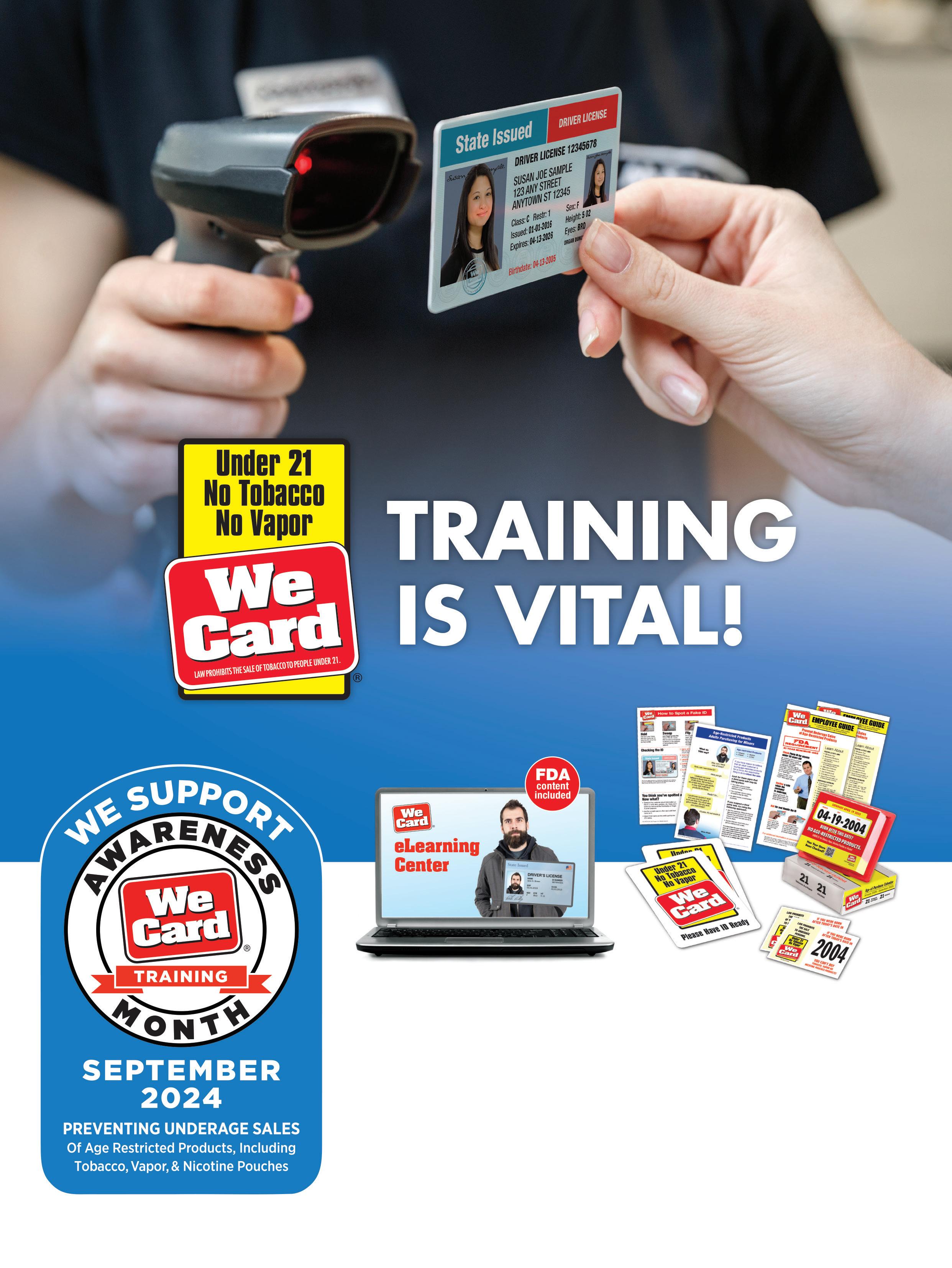
Gear Up for We Card Awareness Month
Kicking off in September, the campaign promotes responsible sales practices and helps prevent underage purchases.
We Card’s Awareness Month is the prime time to ensure your employees are trained to responsibly sell the expanding universe of tobacco, vape, e-cigarettes, modern tobacco products, and other age-restricted items in your stores.
Now in its 29th year, We Card has played an important role in reducing the sales rate to underage people from 40% in 1997 to under 10%, according to SAMHSA.
Convenience Store News talked to Doug Anderson, president of The We Card Program, to learn about the tools the national nonprofit organization offers retailers to identify and deny underage purchase attempts.
What’s the significance of We Card’s Awareness Month?
Doug Anderson: We Card’s Awareness Month spotlights retailers’ efforts and our resources to help them responsibly sell age-restricted products.
September—right after Labor Day—is the perfect time for retailers to reinvigorate their efforts and for us to launch our 2025 Renewal Kit and the 2025 We Card Age of Purchase Calendar. We Card’s decal is visible in many stores nationwide, and our materials and resources are behind the scenes, supporting employees to keep them informed, compliant, and safe.
Over 29 years, we’ve provided 1.1 million We Card kits and equipped retailers with 7 million training tools.
Through research and thousands of surveys, we have learned that training is an ongoing and dynamic process. Newly hired employees should be fully trained, as should veteran employees be re-trained using comprehensive eLearning training.
What challenges do retailers face in adhering to laws governing sales of age-restricted items? How can We Card assist?
DA: Every state is different, and you need to be informed, especially if you are a multi-state operator. The price of noncompliance is high, and fines are steep: rising to $13,000.
The FDA conducts roughly 9,000 checks a month and we see a 12% to 15% violation rate on average, so retailers will fail a check if employees are not properly trained and prepared.
We Card is a go-to resource that provides you with the information and resources you need. We lean on role-playing to help retailers prepare for difficult situations. Knowing “What to Say” when carding and denying underage sales is vital to avoid confrontation.
The Formula To Diffuse Confrontation Over Underage Sales
Training is crucial, especially for cashiers who are on the frontline to check IDs. To avoid confrontation when denying a purchase, We Card developed a technique called AERO:
A: Apologize, and
E: Explain that completing the transaction for underage customers or expired IDs is against the law.
R: Remove the product from the counter.
O: Diffuse the situation by offering another service and to ring up other purchases.
And we train on spotting underage IDs or using expired IDs along with the growing problem of social sourcing, where adults are asked to purchase for those under 21. Retailers see this happening in front of their stores, and educating and training to handle this is an important pillar of our program.
Further, We Card’s ID Check Up Service offers insight into whether employees are carding or scanning IDs and it is an excellent way to gauge store performance and avoid fines.
While We Card is a turnkey program, larger retailers select what they require.
During our We Card Awareness Month, we receive Governor’s proclamations in support of our efforts—we have CT, IN, OH, OK, TX and WV so far and expect more throughout September.
Beyond the decal, what do you want people to take away from We Card’s Awareness Month?
DA: During Awareness Month, it isn’t just about We Card; it is about the industry and responsible retailing efforts. When you display that decal, you are communicating that customers will be carded in stores and that you are good corporate citizens in your communities.
These are examples of companies putting their food where their mouth is.
One of the insightful comments during our meeting was from Joe Sheetz, executive vice chairman of Altoona, Pa.-based Sheetz Inc., who said they will never build another convenience store that does not have restaurant seating inside. Joe said the seating arrangement is not about having a place for people to “hang out.” Rather, it tells customers that Sheetz is serious about being a food provider and reinforces Sheetz’s commitment to high-level professional foodservice instead of having a food program that is an afterthought or an add-on to a traditional c-store offer.
Like everything else, in foodservice, you have to look successful to be successful.
Even more fascinating was Joe’s observation that having a lot of restaurant seating, similar to what you would find in a quick-service or fast-casual restaurant, has created a quality food “halo” over the entire business and helped customers understand and appreciate that Sheetz is a “food first” location.
Annie Gautier, co-CEO of Mansura, La.-based St. Romain Oil/Y Not Stop, said the same thing: that they are building their stores with 30 to 40 seats for diners. This feature has helped them grow their foodservice program to where it is doing annual six-figure sales per store.
As the competition for customers continues to get more difficult and the battle to attract people into our stores heats up, foodservice is going to be a critical component of your store becoming a destination rather than just an emergency or convenience stop. If you want foodservice to be successful, you’ve got to prove to your customers that you are serious about it.
So, what do you do if you don’t have the capital budget of Shell? Here are some starting points:
• First, and foremost, you have to have a quality food product that is consistently served. It doesn’t matter if it’s sandwiches, pizza, fried chicken or barbeque, if your food is bad, nothing else is going to help. Use the best ingredients you can afford, create standard recipes that can be easily followed, manage portion control, and train your staff not only on how to make the item but that every item must be perfect every time.
• Your location must be spotless. This doesn’t apply only to your foodservice prep and serving areas, but to every place on the property. Start at the street and work your way in: the fuel islands, the parking lot, the sidewalk in front of the store, the floor, the sales counter, the cooler doors and shelves and, most importantly, the toilets. A dirty restroom is the same thing as telling your customers that your cooks don’t wash their hands.
• Speaking of which, be obvious about your food safety precautions. Make sure prep counters and cooking areas are clear and clean, uncooked food is stored properly, and pots and pans are cleaned as quickly as possible. All employees must wear gloves and have hair covers. All surfaces, including countertops, dining tables and fountain drink stations, should be continuously wiped clean. Tables should be cleared as soon as they are empty, floors swept every 15 minutes, and trash cans emptied when they are 75% full. Clearly display all the required food safety certificates so that the customer has no doubts.
• Create a space in the store that screams “we are a professional restaurant!” Paint or tile the walls to create a visually separate area, make sure the overhead lighting is sufficient, have menuboards that are up to date and easy to read, and if possible, provide a uniform for employees to help them look professional. Each employee should have several shirts and/or a daily apron so that their clothes stay clean
• Finally, create an additional reason, other than the quality of your food, for the customer to come back. Train and reinforce outstanding customer service so that each person ordering feels welcome. Create daily or weekly specials to vary up your menu, giving your patrons a chance to experiment. Install a loyalty program to encourage frequent visits, and constantly develop menu combinations that are value priced but increase your total gross profit dollars.
These actions will get the customers in your store and create the revenue. However, you still need to ensure that you are operating cost effectively. So, keep an eye on your spoilage and waste, track your inventory and product costs, and make sure that your staffing is appropriate for the amount of business you anticipate.
Like everything else, in foodservice, you have to look successful to be successful. Be bold about what you are doing and convey the message that you are in the food business.
If you do this, what they see will be what they get. CSN
Roy Strasburger is CEO of StrasGlobal, a privately held retail consulting, operations and management provider serving the small-format retail industry nationwide. StrasGlobal operates retail locations for companies that don’t have the desire, expertise or infrastructure to operate them. Learn more at strasglobal.com. Strasburger is also cofounder of Vision Group Network, whose members discuss future trends, challenges and opportunities, and then share with all retailers and suppliers, regardless of the size of their business.
Editor’s note: The opinions expressed in this article are the author’s and do not necessarily reflect the views of Convenience Store News.










































































































COUCHE-TARD’S OUTGOING CEO BRIAN HANNASCH AND INCOMING CEO ALEX MILLER TALK EXCLUSIVELY WITH CONVENIENCE STORE NEWS ABOUT THE TRANSITION
BY LINDA LISANTI
AT ALIMENTATION COUCHE-TARD INC., the CEO club is quite exclusive. The Laval, Quebec-based parent company of Circle K has only had two chief executives during its roughly 45-year history: Alain Bouchard, who founded Couche-Tard in 1980 and served as CEO until September 2014, and Brian Hannasch, who succeeded Bouchard after working 13 years in various roles within the organization.
On Sept. 6, the CEO club welcomed its third member. Alex Miller, who joined Couche-Tard in 2012 and most recently served as chief operating officer, assumed the top post upon Hannasch’s retirement from the position. Miller brings more than 25 years of management experience in the retail fuel and convenience store industry to his new role.
Hannasch, who led Couche-Tard to stunning growth — including a 400% increase in the company’s share price and the acquisitions of nearly 7,800 stores — during his tenure, will stay on as a special advisor to both Miller and Bouchard, now executive chairman of the board.
The outgoing CEO and incoming CEO recently sat down together for an exclusive interview with Convenience Store News to discuss the company’s past, present and future; the importance of protecting Couche-Tard’s culture; and ensuring a successful leadership transition.
CSN: Brian, why did you feel now is the right time to retire?
Hannasch: I hate that word (laughing). And I also still wake up every day asking myself that. It’s a great industry; so many great people, and great customers and experiences over my career. But you know, I started in the industry at 16 and entered again after college, and I’ve just been doing it a long time — 35 years in the industry, coming up on 25 years with Circle K/Couche-Tard, 10 years as CEO. So, there was some poetic symmetry to it.
The other reality is Alex is, I think, a perfect person to replace me and he’s getting old (chuckling). So, if I don’t hurry up, if I took another five to six years, I’m not sure he’d have enough runway left. So, it’s all good. I’m looking forward to the next chapter and it’s just been a great journey, and I’m looking forward to staying connected to Couche-Tard for many years.
CSN: Alex, when you joined CoucheTard back in 2012 as director of fuels, real estate and facilities, did you have aspirations of advancing in the company and did you ever think you’d end up in the CEO seat?

But, you know, I know how humble they are, the culture they drive, the focus on our stores and being present for our people. I’m very blessed and lucky to have all that background and experience.
CSN: Brian, you assumed the role of president and CEO of Couche-Tard in September 2014. Looking back, where was the company at that time? What was going well? What needed improvement?
Hannasch: I joined in 2001 and we were 1,500, 1,600 stores. At that time, we had just entered Europe maybe the year before, so that was a huge change. The calendar and what time the alarms went off and what time we had calls just shifted forever. But in terms of the culture and the company, it was going well. I think we’ve always been very disciplined. We’ve always been very acquisitive, but very disciplined around doing that. So, I’ve been fortunate in my tenure and inherited a company that was financially capable and strong. We were a family of brands then. We probably had five or

Miller: No, it was not on my mind. I was excited to experience something different in a new culture. I love our culture, I love what I’ve learned, and this is where I want to finish. So, the answer is no, but I’m really happy and we’ve grown so much — the company is so different in the 12-13 years I’ve been here — and that created some opportunities for me to do different things. I’m just really grateful for that.
CSN: Alex, can you talk a little about your career path and how you believe it’s prepared you for this moment.
Miller: Yeah, I’ve been in and around our industry for almost 30 years now. It makes me feel old, as Brian said. I’ve been fortunate to live in a lot of different places, work in a lot of different jobs. I’ve been in and around most, nearly all, aspects of our company working in those areas, which helps me feel like I really do know our culture and the things that make us successful.
I’ve gotten to spend a lot of time with Alain and Brian. We’ve only had two CEOs — clearly they’ve both been pretty successful — so it’s massive shoes to step into.




Couche-Tard has harmonized its former family of brands under the Circle K banner.
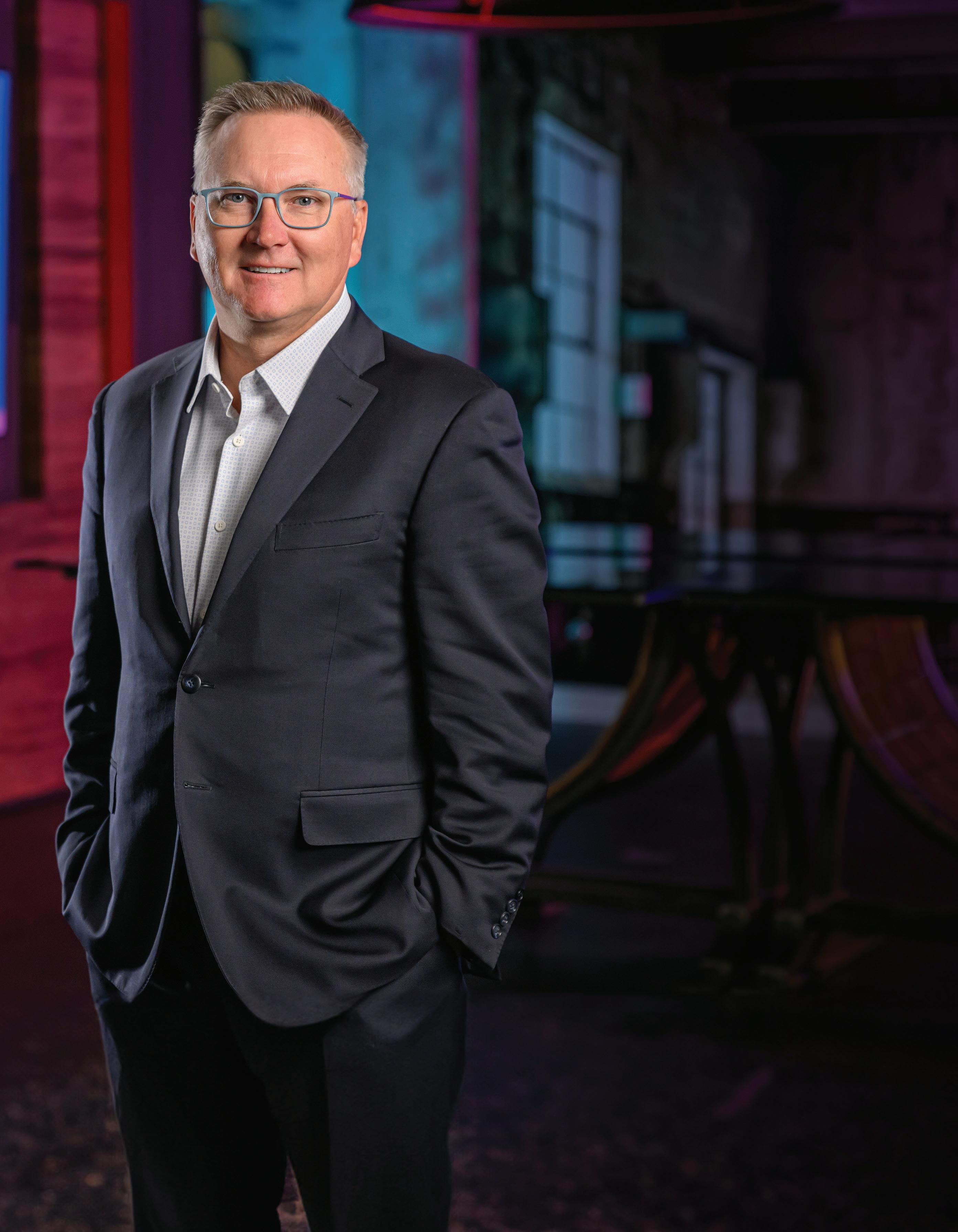
Solutions Better

Tobacco Harm Reduction is A Better Way to A Better Tomorrow™ .
Today, we know there are almost 30 million adult smokers in the U.S. We also know that lasting changes to their behavior require evidenced-based information and alternative products. The way forward is complex, but compelling. It will require sensible regulation, clear paths for innovation, adult nicotine consumer choice & transparent collaboration.




Reynolds supports sensible regulation based on sound science that allows for responsible innovation and prioritizes access to alternatives for adult smokers. Swift enforcement of this regulation will eliminate the entry of unlawful products, including those marketed at youth that have saturated the current market and sabotaged progress toward making actual reduced-risk options available.
Now is the moment to move forward. To those who share a common ambition to reduce the harm from cigarette smoking, we invite dialogue and collaboration. Let’s work together towards pragmatic, science-based solutions to get us all there. The opportunity to deliver one of the most significant advancements for the future of public health is too promising to pass up.
Wade Huckabee
Senior Vice President, Strategy & Transformation
Reynolds American Inc.
The time is now. Scan to learn more.





six different brands globally. Over the last five to seven years, we’ve gone down a journey to harmonize that under Circle K.
The asset that we’ve had that I think has differentiated us and given us a license to do what we’ve done has really been our culture and I inherited a very strong one. I’d like to think that over the last decade, we’ve been pretty successful despite the growth at maintaining that and hopefully getting a little bit better on the people side of the business.
CSN: Brian, what would you say are the achievements you’re most proud of during your tenure?
Hannasch: I mean, there’s all kinds of numbers, right, about growth and stock performance and all that, but I would say seeing so many people grow in the company. So many people in our stores have told me great stories about putting their kids through college and how they’re doctors and things like that. So, just watching the people piece — and I probably wouldn’t have said that 10 years ago — but that to me is absolutely the most rewarding thing. We do a Gallup survey every year and eight years in a row, we improved our employee engagement. We’re not by any means perfect, but it’s a continuous journey to be a better people company.
Let’s say that’s one and then two, when we bought Circle K 20 years ago this year, it was a bit of a tired brand. It had a lot of different owners and hadn’t been invested in. We’re on a journey to make that brand be something more than just a sign; make it a piece of the customer’s mind and their hearts to turn left instead of right. And again, that’ll be a continuous journey. We’ve got areas and geographies in countries where we’ve done that very well and others where it’s a work in progress. But I think we’ve developed a respected brand that means a lot to our employees and a lot to our customers.
CSN: Alex, what have you learned from Brian that you will apply to your new role?
Miller: Brian and I have known each other for almost 30 years. He was my second or third boss when I worked in Amoco. Especially during these last 12-13 years, we’ve spent a lot of time together, and we’ve been spending even more time together over the last few months, which is great. He is a teacher to me, a mentor to me. He’s also my friend.
What have I learned from him? The humility. If you see him in our stores, his genuine interest, his ability to talk to our managers and to learn. He is world-class at M&A [mergers and acquisitions], both the way he thinks and his appetite for it. And his attention to detail. It’s kind of a cliché, retail is detail, but he always knows and he’s always looking. I owe a great deal to Brian. I would not be sitting on this call with you today without him and everything he’s done for me.
CSN: Brian, why do you think Alex is perfect for this role?
Hannasch: We treasure our culture and so, bringing an internal candidate was very high on my list and I believe our board of directors’ list. [Alex] just gets the culture, and it’s not written down anywhere. It’s how you show up. It’s being a little bit humble. It’s
As CEO, Brian Hannasch worked hard at spending much of his time “in the business” rather than in his o ce.

The future’s looking up for adult tobacco and nicotine consumers looking for spit-free, smoke-free nicotine satisfaction. ZYN makes 23 of the nation’s top 25 selling nicotine pouches which makes your top shelf the most logical place to find it.
being tremendously empathetic about the 150,000 people that we have out there working 365 [days a year], 24 hours a day, and just appreciating them and making sure they’re first and foremost in our thoughts. It’s so easy to get caught in your office doing stuff and Alex realizes that’s not how we win; that’s not how we take care of people and that’s not how we continue to build the culture.
On top of that, he’s got a lot of skills in a lot of areas that, quite honestly, are better than me. So, a good package. And I think we’ve got a good team around him, like with me, to supplement any of the weaknesses or blind spots that we have. He’s in a great place.

CSN: Brian, how have you been helping to shepherd Alex into this new chapter? What advice have you given him? Hannasch: I think your voice changes in the room. You have to be very careful … if you say something, you can easily enhance the conversation or kill it. So, I think that’s one and then two, if you ask for something, you’re likely to get it and that can tremendously distract the organization. So, just being a little careful. And then, focus I would say is the third I would leave you with. I think most companies get distracted and don’t implement their plans, so what are those four or five things that Alex wants to achieve over the next X period of time and just staying laser focused on those, and trying to stay out of the stuff — the minutia — that bogs us all down and clogs our emails and our team meetings. Easier said than done, but I worked hard at that.
CSN: Alex, thinking of your leadership style vs. Brian’s leadership style, how would you say it’s similar? How would you say it’s di erent?
Miller: I think it’s pretty similar. Play to our strengths, which for me, it’s engaging with people. It’s hopefully being humble. It’s being transparent. It’s being honest. I think Brian and I share, and I know Alain shares, you know, just put great people around you, put people that you believe are smarter than you around you, and people that are different in the way they think and different in the way they approach things.
I’ve always said that when I’m doing well, people don’t need me very much because they’re making decisions, they’re leading their business, they feel empowered. And I know Brian feels that way as well. So, that’s where my focus is. I feel like I know our culture. To me, that is our culture, and we’ll just continue to work to really protect that and empower that even further.

CSN: Brian, when you were inducted into the Convenience Store News Hall of Fame back in 2022, you said your biggest fear was protecting Couche-Tard’s culture as the company got bigger. During your time as CEO, in what ways have you protected that culture?
Hannasch: Today in 31 countries, [it’s] harder, but Alex and I have stayed very committed to being out in the business. So, we touch our business units at least twice a year and then we have several gatherings. Those are very important. We want a culture of being in the stores, appreciating the stores and people first.
And then, COVID I think exposed us all to technologies and different

Alex Miller brings more than 25 years of management experience in the retail fuel and convenience store industry to his new role.





















































ways of communicating and so, we’ve really dialed up from having not a lot of communications capabilities [to today], we’ve given our business units tools to communicate with the stores much more easily than they could before. That allows us to tell stories, but broadcast it across the world.
A couple of other ones: I’ve been pretty passionate about getting rid of jerks in our company. I wasn’t always good at that and we’ve had some people that have been absolute rock stars, but they couldn’t treat people right. I probably learned a little too late in my life that that’s just not worth it. It’s a cancer that needs to go away. I’m not saying we’re perfect, but I think that’s been good for us, to make sure that we clearly communicate and role model behaving properly and treating others right. … Be respectful, the golden rule.
And then, the other one is one of the keys to our success has been integrating companies well. I’ve been very proud that very rarely would somebody in this company say, ‘Who are you? Are you legacy Pantry or Circle K or…or… or…?’ We very quickly get people to feel like they’re part of the family and I think that’s the way we’ve modeled welcoming people, genuinely looking for their ideas, not coming in and saying this is the Couche-Tard way or the Circle K
way. We genuinely want to learn and take best practices into the organization. I think that’s been a very, very important part of our culture as well that’s enabled a lot of the growth we’ve had over the years.
CSN: Alex, as CEO, where do you hope to take Couche-Tard in the near- and long-term? And how do you plan to do your part to protect the culture?
Miller: We’ve had two CEOs in 45 years, Alain and Brian, right? Big shoes to step into. But it is to continue that journey. One thing when I talk to our people [is] they like to be part of a growth company, so we absolutely want to continue to grow in the space. I think if you look at Brian’s tenure, I always look at three buckets: shareholder returns, people returns, community returns. And, you know as we’ve talked, I think he’s raised the bar materially in each of those areas, and I want to continue that.
I think a relentless focus on the customer — how we actually can make their lives easier — that’s our stated mission and so, really digging deeper into that and how we can do that and how our scale enables us to provide solutions that maybe others don’t have. We want to be the global leader in mobility and convenience. I think we’re still early days on that journey, so just continuing that with a lot of intensity, which is another reason why I like working here.
CSN: Brian, what’s next for you?
Hannasch: It’s a great question, and I really haven’t focused on it too much. I guess first, it’s making sure I’m there for Alex and the team. That’s important for me that this is a very smooth transition and it goes well. I think doing interesting things with interesting people is very high on my list. I haven’t defined that yet, but those are kind of two metrics or parameters that I’ve put out there. I’m 57, fortunate to be in good health, so I’ll find the next mountain to climb. But I couldn’t be more proud of Couche-Tard, and its best days are ahead of it. CSN
Couche-Tard acquired nearly 7,800 stores during Brian Hannasch’s tenure.

Stopping the Next Prohibition
Generational tobacco bans are setting precedents that the industry is attempting to halt
By Renée M. Covino
PICK AN ARBITRARY birth date of a legal adult — say Jan. 1, 2000 — and decide all adults born on or after that date cannot purchase tobacco and nicotine products in your town — for life. That is the definition of a generational ban, the next frontier of tobacco regulation.
Massachusetts’ highest court recently upheld a Brookline, Mass., bylaw that banned all tobacco and nicotine sales to adults born on the aforementioned date. Six other towns in the state have enacted similar legislation and six more are currently considering it.
“These policies are outrageous and ridiculous, are not grounded in science, and do nothing but push legal products into the illicit market,” Peter Brennan, executive director of the New England Convenience Store and Energy Marketers Association (NECSEMA), told Convenience Store News. “Adults aged 21 and older have the right to make personal decisions about their purchase and use of legal products, including nicotine items. We believe this is a slippery slope toward legislating morality, and it opens the door for similarly absurd bans on other legal products, such as lottery, caffeine, alcohol or cannabis.”
David Spross, executive director of the National Association of Tobacco Outlets (NATO), points out more flaws. “These misinformed policies are not about youth; they instead target adults 21 and older, who should have the right to choose which legal products they purchase and
use,” he said. “Moreover, these bans do not distinguish between higher risk products, such as cigarettes, and harm reduction products, such as vapes and nicotine pouches.
“Ultimately, this policy is nothing short of hypocrisy because Massachusetts, which has legalized recreational cannabis along with legal-age alcohol sales and gambling, is trying to eliminate the sale of nicotine products — another legal, age-restricted product,” he added.
Ordinances like the one in Brookline that ban the sale of tobacco and e-cigarette products to anyone born after Jan. 1, 2000, “create enforcement and implementation issues that may make them ineffective,” according to Agustin Rodriguez, a partner specializing in tobacco at the national law firm of Troutman Pepper. He reasoned that legal-age consumers who want to purchase tobacco products can still buy them online or in a neighboring locality.
Even more curious, Rodriguez explained that the Massachusetts Supreme Judicial Court (SJC) decision upholding the Brookline ordinance appears to be resultsoriented, which he said isn’t uncommon in The Bay State when it involves tobacco products.
“Interestingly, the SJC, on its own initiative, transferred the case from the appellate court, thus avoiding any potential for a contrary decision,” Rodriguez said. “The court then ignored fairly clear indications that the ordinance is preempted by both federal and state law. In particular, any ban of a product, including any flavor ban for that matter, should be properly viewed as a product standard that only the Food and Drug Administration can impose.”
A Grassroots Fight
Earlier this year, NECSEMA launched a grassroots campaign to oppose generational bans, also referred to as the Nicotine Free Generation (NFG) concept or the

Tobacco Free Generation concept. No matter the terminology, the industry consensus is that they amount to the next step in an authoritarian movement that seeks to dictate the life choices of adults.
NECSEMA is making a robust effort to fight the movement.
“We’ve created Citizens for Adult Choices to educate the public about the dangers these local bans pose for law-abiding adults in Massachusetts,” said NECSEMA President Alex Weatherall. “We’re not going to sit quietly and acquiesce to a nanny state.”
On the Watch List
To date, these are the Massachusetts municipalities that have had generational ban activity:
Adopted: Brookline, Malden, Melrose, Reading, Stoneham, Wakefield, Winchester
Considering: Concord, Lexington, Medford, Needham, Newton, Northampton
Tabled: Lynnfield
More Massachusetts towns have discussed the issue, but have not acted yet.
Source: National Association of Tobacco Outlets
Brennan noted that the policy had spread to a handful of additional communities in Massachusetts because the local (unelected) health boards enacted the policies without seeking feedback from those who live in the communities.
“If the anti-nicotine zealots have their way, it will remain legal to buy and use every imaginable form of cannabis or to gamble on sports 24/7, yet those same adults can’t buy a cigar for a wedding or a nicotine pouch to relax,” he said. “It’s time to deliver a reality check to politicians and local officials to stop these blatant attacks on adult rights.”
Brennan added that other countries have proposed, and then pulled back, similar legislation.
In New Zealand, a law banning tobacco sales to those born after Jan. 1, 2009, was adopted, but it was later repealed by the country’s new coalition government due to concerns over lost tax revenue and fear of black-market activity.
“New Zealand passed and then rescinded a similar policy when it was shown to be overwhelmingly unpopular,” Brennan said.
Retailers Must Act
It’s not enough for associations to fight this, retailers must get on board, industry experts say.
NECSEMA is educating its members about how to engage with local boards of health and other governmental bodies to make sure their voices are heard. Convenience store operators need to attend hearings and provide testimony opposing these policies and other
over-regulation, according to Brennan.
“These policies not only harm small businesses, but they also create illicit markets, strip away tax revenue that can be used for anti-smoking programs, infringe upon civil liberties and remove nicotine products that are used by many to quit smoking,” he said, encouraging retailers to get more information on the CitizensForAdultChoice.com website.
NATO’s Spross recommends that c-store retailers and adult tobacco consumers educate themselves and get engaged. “They should attend meetings in their localities when this issue is discussed and speak out against this misinformed policy,” he stated.
Paying attention to the political pulse is also imperative. “Until there is a federal circuit split on the question of whether a product ban constitutes an impermissible product standard that is subject to federal preemption, the best that retailers and consumers can do is exercise their political rights and vote for non-prohibitionist councilmen,” Rodriguez said.
Learning From the Past
Brennan pointed out that “we have seen prohibition does not work; it did not work for alcohol or cannabis, and it will not work for tobacco.”
“Generational bans do more harm than good by fueling a dangerous, unregulated black market where kids can more easily get their hands on nicotine products from bad actors selling prohibited and tainted goods,” he cautioned.
These policies will also eliminate access to proven harm reduction strategies for smokers trying to quit, while further marginalizing and stigmatizing nicotine users and contributing to mental health challenges, Brennan added.
Spross urges Massachusetts to pivot away from what history already proved to be ineffective.
“These communities should focus on harm reduction rather than prohibition, which we know leads to illicit sales and law enforcement concerns,” he said.
Rodriguez echoes that “history has shown repeatedly that attempts to prohibit products like nicotine products, alcoholic beverages and cannabis products are unfruitful from a policy perspective.”
From his legal viewpoint, these ordinances are, at best, examples where state courts have decided not to find local tobacco laws preempted by state or federal tobacco laws.
“The trend signals that local governments — in states intent on tighter tobacco regulation — are increasingly wielding more power over the tobacco industry, with the apparent consent of their state legislatures,” Rodriguez said. “Therefore, it is important for industry members to pay close attention to local laws or the jurisdictions in which they do business, and for consumers to make it clear to their local legislators that they will not tolerate prohibitionism when it comes to consumer packaged goods.” CSN













































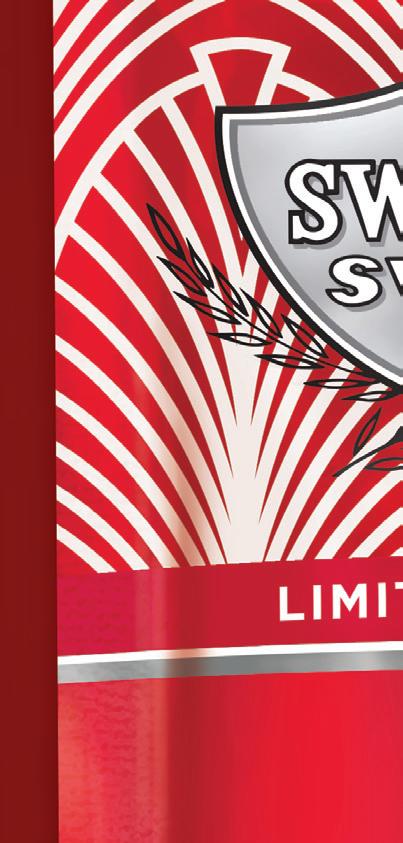


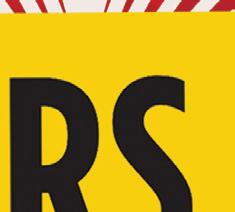




























































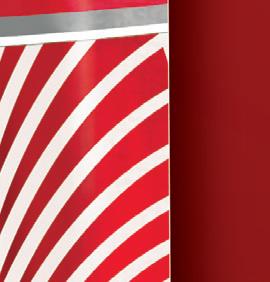


























































A Category With Unique Challenges
The c-store wine and liquor business can be tricky, but there are ways to grow market share
By Kathleen Furore
WHILE THE CATEGORY is holding its own in the convenience channel, boosting wine and liquor sales can be challenging for operators due to the hurdles they face that grocery, mass and club stores do not.
Lack of merchandising space, which can result in a limited wine and spirit inventory, is one of them, according to Jay Hornback, manager of convenience channel sales for Beam Suntory, the 2024 Convenience Store News Category Captain for wine and liquor.
“Due to limited space, they traditionally offer the core products in each flavor segment,” Hornback said of c-stores. “We find that innovation and LTO [limited-time offer] items are more challenging to merchandise in the convenience channel vs. grocery and mass stores.”
There are ways, though, that space-challenged convenience stores can tackle that challenge.
“We do see some progressive retailers who reserve space for small endcaps or utilize bin stackers for smaller displays,” Hornback reported. “With limited space for inventory, they need to make sure the items they are displaying are strong-performing brands that will move quickly. These displays can provide incremental purchases along with other adult beverage categories.”
The way consumers shop c-stores compared to other retail channels is another factor that impacts inventory and purchase decisions. “With the convenience channel consumer spending much less time in the store, having the core brands is what they expect since they are saving time vs. visiting a larger retail outlet,” Hornback pointed out.
Herb Smith, vice president of customer development for Gallo, echoes this. “When consumers purchase wine and spirits at convenience stores, they look for products they plan to consume right away — 85% of their purchases













































































































































































































FLAVOR AT THE POP OF A CAN





























are consumed within one hour of purchase,” he said. “Their product preferences point to convenience and immediacy.”
Those preferences are driving sales of products in small-package formats, according to Smith. He noted that Circana wine data from July 2024 showed that “small-size packaging is still expanding its presence in c-stores, primarily driven by 500-milliliter Tetra Paks, growing 9%.”
A final challenge for the convenience channel that can be tougher to tackle is keeping inventory both safe and easily accessible for the majority of c-store shoppers who want just a quick in-andout trip for alcoholic beverages to fill an immediate need.
Many stores now keep product in locked cases to prevent theft, which can significantly impact sales, according to internal insight studies conducted by Beam Suntory. While not specific to the convenience channel, the studies showed that when shoppers wait for lockbox assistance, retailers have roughly five minutes to aid the shopper to minimize lost sales risk.
Placing lockboxes in prominent, easyto-find locations to reduce the time and effort required to access wine and liquor products; making sure employees are readily available to assist during core shopping hours; making it easy for patrons to request help; and monitoring in-stocks to ensure on-shelf availability are ways stores can temper the risk, Hornback advised.
He also offered a way to keep customers waiting for access to products engaged. “Incorporate technology with interactive touchscreens/virtual displays, so shoppers can be entertained and educated about spirits and mixology,” he suggested. “This can minimize shopper boredom while potentially building the basket through cocktail suggestions.”
Business-Boosting
Strategies
Given the unique challenges c-store operators face in the wine and liquor category, how can they grow market share? Hornback and Smith offered the following tips:
Create impactful displays. Retailers that take the time to creatively merchandise products in ways that capture consumer awareness “can really win big,” said
Hornback. Because wine and spirits sometimes aren’t “easily viewable” in c-stores, “making consumers aware that wine and spirits are sold in the store is the first step,” he explained, adding that stores that incorporate creative, high-impact displays have reaped the benefits.
“At one large midwestern chain, we had a Jim Beam display program with custom bin stacker in over 500 stores for a threemonth program. In another chain, we focused on some of our higher-end offerings and paired a cigar, cutter and rocks glass for a Father's Day promotion. This was a first for the chain and it was well received,” he shared.
Publicize your pricing. This means making sure stores offer competitive pricing that is easily visible. “Typically, c-stores are slightly higher in price [for wine and liquor products], but if they are closer in price to their grocery and mass competitors, they have a better chance of gaining share,” Hornback said.
Allowing customers to mix and match for one price also can be an effective tactic. “We have seen several retailers bundle wine and spirits to allow consumers to mix and match items for one special price that was cheaper than buying individually,” he reported.
Build up baskets. “C-store customers are looking for a range of products, ready to go, cold,” Smith said. So, he recommends dedicating space within coolers and walk-in beer caves to wine. In particular, offering 750-milliliter sizes in the cold box, allowing shoppers to consider larger formats, which can increase basket size.
Hornback also suggests c-stores borrow an idea from grocery retailers. “With many operators increasing their food experiences for consumers, [c-stores] could follow the lead of leading grocery retailers and provide suggested pairings or features. This could help increase the basket ring and increase consumer satisfaction,” he said.
Include wine and spirits on mobile apps. Retailers that have mobile apps should make wine and spirits visible on their app, where legal, according to Hornback. “Most of the promotions and visual items within adult beverage are beer items,” he said. “By promoting wine and spirits, it helps remind consumers that these items are sold by the retailer.”
Pay close attention to consumer demand. Staying on top of shopper preferences can provide information needed to adjust assortment and merchandising in ways that will drive sales. Smith cited Soju, a low alcohol distilled spirit made from rice milk, as one example of a product segment to consider. “Consumers are looking for Soju, which presents an amazing growth opportunity for the convenience channel,” he said.
When selecting inventory and making merchandising decisions, Smith said retailers should consider the fact that “more consumers are purchasing across all four alcoholic beverage categories than ever before; very few consumers limit their selection to just one category.
“If their destination status is beer, then expanding their products to serve the total alcoholic beverage needs of the broader population may drive traffic and revenue,” he continued. “Offering products that are relevant to the ever-evolving alcoholic beverage consumer, especially younger legal drinking age Gen Z and millennial generations, is critical.” CSN





Retailers




CONVENIENCE STORES EMBRACE PRIVATE BRANDS
RETAILERS IN THE CHANNEL FOCUS ON QUALITY, VALUE AND DIFFERENTIATION WHEN DEVELOPING NEW PRODUCTS.
By Greg Sleter
Within the convenience store model, convenience remains, naturally enough, the most important element that retailers in the channel provide their customers. However, the ever-evolving retail landscape that includes more shoppers focused on the value proposition of what they buy continues to open new opportunities for growth of store-brand products.
In recent years, expanding own-brand selections within the grocery, mass merchant and dollar store channels has propelled growth across
the private label industry. Now, convenience store retailers are ramping up their product development efforts to evolve their respective assortments and add more store-brand items across many product categories.
“We’re definitely seeing continued momentum in the convenience channel this year,” affirms Chelsey Capps, director of thought leadership at Stamford, Conn.based Daymon. “While the channel is not immune to the pressures of inflation, we continue to see dollar and units in convenience outpace the total market, most notably grocery and drug.”
A growing number of retailers within the convenience channel are sharpening
7-Eleven has launched its 7-Select Fusion Energy Beverage.











= + A New Alliance Your Label Our Paper
















• Full range of ultra, premium, FSC® Certified, recycled, and traditional paper grades.
• Paper towels, bath tissue, napkins, and facial tissues.


• Flexible, custom manufacturing, packaging and displays.
Some things simply go together - for good reason. By delivering quality private label paper products, at the best price, when and where they’re needed, our customers confidently trust us with their label. Just ask and we’ll put it on paper!


• For lower volumes, we offer our pre-packaged Azure® Ultra Premium, Daisy®, Delicate Touch®, and Earth One™ store brands.
































CONVENIENCE STORES

Quality and Value
Taking advantage of opportunities of currentday macroeconomic conditions is a factor driving private label growth at Irving, Texasbased 7-Eleven. According to Nikki Boyers, VP of private brands for the C-store chain, the retailer wants the 7-Eleven family of brands to be the convenience food destination of choice for consumers.
“This means placing an increased emphasis on our private brands,” notes Boyers. “More than 87% of U.S. consumers chose private label products. Our private brands provide a huge differentiator for us to deliver on customers’ quality and value needs.”
their focus on their private label offerings and investing more in product development. As with retailers in all channels, the goal is to provide quality products at a value, with differentiation an added key to success.
“What’s interesting in the current marketplace is that quick-serve restaurants continue to raise their prices,” says Capps. “Consumers are looking for alternative solutions that deliver a better overall value. For C-stores, this is an opportunity for them to execute their own programs and deliver with ownable product offerings.”

There is definitely a trend more toward value shopping, and we are doing a lot of promotional activity through our loyalty program. People are shopping much smarter, given the disposable income that’s in their pockets.
— Kevin Smartt, TXB

For its 7-Select own brand, Boyers says that the retailer’s goal is to provide shoppers with high-quality, differentiated products at a value. Popular categories include water, sports drinks, juices, teas and snacks.
Officials at TXB are also focused on value as the Spicewood, Texas-based convenience store chain works to expand its private label assortment. Over the past year, the retailer has grown its offerings with the addition of a hydration line, new flavors to its Nitro coffee assortment and the launch of a new peanut line.
“There is definitely a trend more toward value shopping, and we are doing a lot of promotional activity through our loyalty program,” asserts Kevin Smartt, CEO of TXB. “People are shopping much smarter, given the disposable income that’s in their pockets.”
With the focus on value, Smartt adds that TXB has seen a growing demand for multipacks, particularly in beverages, and a significant uptick in products that the convenience store chain positions as high-value offerings.
“The good news for us is that we have offerings for both,” he says. “We remain focused on providing quality products and also a commitment to a positive shopping experience that has allowed us to continue seeing positive traffic.”
TXB’s private label offerings include coffee mugs and coolers that feature the convenience store’s brand.
Every generation has its own unique character and traits, but they all share one thing in common, they love store brands. Surveys consistently show that, on average, consumers of all ages buy store brands in the same quantity and with the same frequency.
That’s why several thousand experienced, best in class suppliers from around the world will be at PLMA’s 2024 Private Label Trade Show, November 17-19, in Chicago, offering retailers innovative, high quality food and non-food products with wide-ranging, multi-generational appeal.
Whether its sustainable packaging for Gen Zers or functional beverages for Boomers, food products with an ethnic or international flair for growing Millennial and Gen X families or health and wellness selections for various life stages, there will be products on display for all your customers in every category.

DON’T MISS! BONUS PROGRAMMING
LUNCH & LEARN 12:30pm ET • Online
The Multigenerational Appeal of Store Brands: From Baby Boomers to GenZ

12


19

Register at plma.com for the complimentary online Lunch & Learn programs. Email visitors@plma.com to register for the Trade Show.
CONVENIENCE STORES
The Evolving Shopper
Meanwhile, Capps points out that the ever-changing behavior of shoppers, which seems to evolve at a more rapid pace than in prior years, offers convenience stores opportunities to develop unique products and further build out their private brands.
“We know the value equation is changing, but as it changes, we see retailers continuing to keep their foot on the gas pedal as it relates to bold flavor development, convenient pack sizes and finding ways to expand a portfolio offering beyond just the basics,” she says. “Retailers that are investing in private brands are also investing to keep shoppers satisfied with better overall value, and meeting shifting shopper needs that live up to the quality expectations shoppers have come to know and expect.”
At 7-Eleven, Boyers notes that the focus is on providing private-brand products that are higher in quality than national brands, at a better retail price for shoppers. With the retailer offering more than 900 store-brand items across 50 categories, the convenience store chain’s product developers source quality ingredients to create differentiated products for its assortments.
“We partner with manufacturers to produce these new and innovative items that are the first to market, the best in the market and/ or exclusive to 7-Eleven stores,” she adds.
An example of 7-Eleven’s efforts to develop unique, quality items that Boyers cites is the convenience store chain’s collaboration with Miracle Seltzer on the launch of a sparklingwater line sold under the 7-Select brand.
The assortment, which features such flavors as lemon-lime, green apple and sweet orange, was also used by 7-Eleven in an April Fools marketing campaign that included its Big Bite Hot Dog. The prank included hot dog-flavored sparkling water. This hoax served to generate awareness of the quality and innovation of the 7-Select line, according to Boyers.
At TXB, Smartt notes that the growing trust and confidence that shoppers have in private label products has given the convenience store chain more freedom to be adventurous when developing new products.


“From the beginning, we’ve taken the viewpoint that we want to create quality products for our private-brand assortment, and we want that to be the perception in the consumer’s mind,” he says. “When developing products, we’re always looking for uniqueness in terms of flavor, package size, etc. It’s all about creating a quality brand that offers some differentiation.”
Our private brands provide a huge differentiator for us to deliver on customers’ quality and value needs.
—Nikki Boyers, 7-Eleven

Part of the strategy to set itself apart from other retailers is TXB’s non-consumable private-brand product line. This includes such items as apparel and hard- and soft-sided coolers, among other products.
Putting Products to the Test
“We’re pretty active in seeking out new products and going through the process of testing and vetting of potential product suppliers,” says Smartt. “We not only want to get the product right, but make sure other issues, such as packaging designs and logistics, are all in place.”
The momentum enjoyed by private-brand product growth seen in recent years through the convenience store channel is expected to continue. For example, 7-Eleven’s Boyers notes that the retailer is placing an increased focus on proprietary beverages and fresh food, along with private brands.
“We plan to introduce more than 200 new private-brand items across the portfolio this year,” she says. “We will also enter new categories, including energy, frozen food, sparkling wine and prosecco, and rapid hydration.”
7-Eleven recently debuted its 7-Select Rehydrate beverage in a variety of flavors.

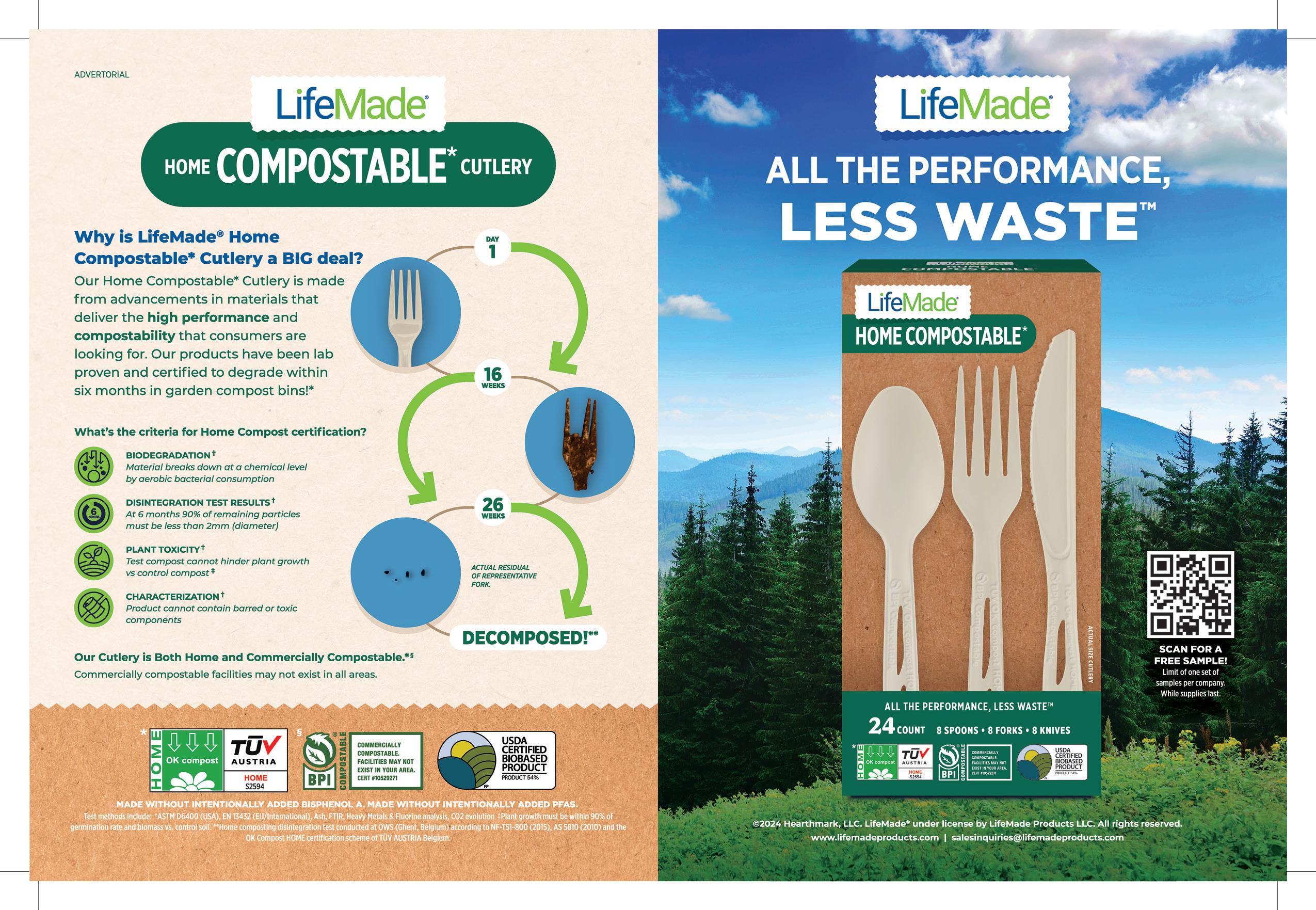


SNACK ATTACK
CONSUMERS ARE SEEKING PRIVATE LABEL SWEET AND SALTY ALTERNATIVES TO OFFSET RISING NATIONAL-BRAND PRICES.
By Greg Sleter
To give shoppers lower-priced, quality alternatives, several retailers throughout 2024 have worked to expand their snack food assortments largely in response to continued price increases from national brands.
While experts say that consumers are conscious of price when looking for their favorite snacks, many are not just seeking out an item that carries the lowest price. While value is key for many shoppers, many are also open to trying new items and new flavor profiles as long as doing so doesn’t empty their wallets.
With this in mind, a growing number of retailers, from grocers to mass merchants and convenience stores, have expanded their ownbrand assortments of salty and sweet snacks.
To get greater insight into the current state of the snack food marketplace, Store Brands spoke with Melissa Myres, insights director with Cincinnati-based 84.51˚, the data science arm of The Kroger Co., and Sally Lyons Wyatt, global EVP and chief advisor with Chicago-based consumer insights firm Circana.
STORE BRANDS: What trends are driving the snack food business?
MELISSA MYRES: In recent consumer research, we’re seeing some trends. The biggest is 66% of shoppers saying they are extremely concerned over inflation, the highest level we’ve seen since March of 2023. With that, 64% of shoppers have said they are looking for deals, sales and coupons more often, as they are very concerned with value. Consumers still have their snacking occasions, but they are switching to lower-cost brands more often to satisfy their needs. They’re willing to trade down or into other options when it comes to snacking.
SALLY LYONS WYATT: Nostalgic flavors is a trend that I think is very interesting. It started in 2023, and I wasn’t sure it would continue, but it has. We’ve seen a lot of freeze-dried snacks, along with several products that include caffeine. We’ve also continued to see an uptick in products focused on well-being. And when we look
Grocers such as ALDI continue to expand their assortments of private label snacks to give consumers more options at a better value than national brands.

Everything we do is a root in the rich soil that takes strong relationships, knowledge, and timing to do it right. And it all starts with a single seed.
Seneca’s high quality produce is sourced from over 1,400 American farms—family farmers we have done business with for many years, and in some cases generations. Our motto of Farm Fresh Goodness Made Great echoes throughout our fundamental beliefs, which have been key to our success since 1949.
This year, Seneca Foods is celebrating 75 years in business. We have spent these years working hard to become one of the most highly integrated fruit and vegetable processing companies in the US. We manage many—and in some cases all—aspects of production, to provide families with a wide range of nutritious fruit and vegetable products that are safe, satisfying and sustainable.
We do it together, the same way we have for over seven decades. Because our roots run deep.


SNACKS
at the consumer overall, they are trying to find the right balance between indulgence and better-for-you options.
SB: Under the large umbrella of snacking, are there certain products that are seeing the most interest from consumers?
MM: Looking at the past six months, there has been noteworthy growth in meat snacks, especially in private label. We have also seen growth in trail mix and with potato chips.
SLW: Candy continues to be a popular snack, whether chocolate or non-chocolate. Also popular are potato chips, cookies and crackers, and then yogurt. There is also diversity in snacking and with what consumers see as snacks. Products such as tortilla chips, frozen novelties, dried meat, frozen appetizers and snack rolls are also popular. You’ve got products that are either shelf-stable, sweet or frozen. That’s a very diverse group.
SB: What impact is pricing having on the buying decisions of consumers?
MM: People are noticing the price increases, and snacks and candy are among the categories where the higher prices are most noticeable. As a result, 43% of consumers are willing to switch to lower-cost brands within these categories. People still have their snacking occasions, whether they are working from home or watching a sporting event. With price the No. 1 thing they’re thinking about when shopping, consumers are also looking for options that differ from what they have been buying and are also looking for products offering a better value.
SLW: When looking at the price piece of this, we are still, on average, roughly 30% higher than 2019 within food and beverage, and the story is much the same with snacking. But when you look at the end of 2023 into the beginning of 2024, the price increases of what we were seeing at the end of 2022 into 2023 are nowhere near the same. So we have slowed the price increase, month over month. There is also a variety of pricing when it comes to snacks, because of the variety of pack sizes offered. Some consumers will buy bigger pack sizes or multipacks to save money long-term,

The slowdown we’ve seen in coffee has had an impact on snacks. With people cutting back on their midday caffeine fix, consumers are looking for snacks that offer another source of energy during the day.
—Sally Lyons Wyatt, Circana
while others are looking for single-serve sizes. Snacking does a nice job of giving consumers a variety of prices to meet their needs.
SB: What role is health or healthy snacks having in the segment?
MM: Most shoppers are claiming they care about their health when it comes to snacking. However, on the flip side, our research shows that 28% of shoppers claim they don’t look at the ingredients list when they’re buying snacks. We also have 75% of shoppers who tell us that taste and flavor are the most important factors when they choose a snack, and only 29% say they are looking for some benefit such as high protein or low sugar. While taste still reigns supreme, it will be interesting to see how and if that number fluctuates over time.
SLW: The slowdown we’ve seen in coffee has had an impact on snacks. With people cutting back on their midday caffeine fix, consumers are looking for snacks that offer another source of energy during the day. Products with protein also play into this need for energy. So I’m not sure consumers are looking toward these products because they are healthier options; rather, they are turning to these products based on a need.
People are noticing the price increases, and snacks and candy are among the categories where the higher prices are most noticeable. As a result, 43% of consumers are willing to switch to lower-cost brands within these categories.
—Melissa Myres, 84.51˚

SB: Is there any notable di erence demographically when it comes to the type of snacks consumers are buying?
MM: Our research does not indicate any major difference among the age groups when it comes to buying snacks. The one place there is some difference is within snacking occasions. Three-quarters of consumers aged 35 to 54 say they’re snacking multiple times a day. Only 56% of consumers 18 to 34 are snacking multiple times a day.
SLW: When it comes to the generational aspect of snacking, it’s not just the fact that consumers are snacking, but it’s the differences between each of the generations. It’s important to cater to each of the age groups with a personalized message. The type of product that may be interesting to someone in Gen X may not be of interest to someone in Gen Z. Being able to personalize or customize messaging by cohort group, whatever that group is, is one thing that retailers and manufacturers need to do their best to embrace. That will help overall traffic penetration and sales.



ACTIONABLE INSIGHTS & CONNECTIONS POWERING BUSINESS GROWTH
EnsembleIQ is the premier resource of actionable insights and connections powering business growth throughout the path to purchase. We help retail, technology, consumer goods, healthcare and hospitality professionals make informed decisions and gain a competitive advantage.
EnsembleIQ delivers the most trusted business intelligence from leading industry experts, creative marketing solutions and impactful event experiences that connect best-in-class suppliers and service providers with our vibrant business-building communities.


















MADE IN THE U.S.A.
HOMEGROWN PROSPECTS
By Greg Sleter







PCONTINUED PRIVATE LABEL GROWTH IS OPENING UP NEW OPPORTUNITIES FOR U.S.-BASED MANUFACTURERS.






rivate label products continue to grow, and as retailers expand their assortments, perhaps their greatest challenge is expanding their roster of reliable suppliers that can provide high-value, quality products made close to home.





While the pandemic has faded into the background, the worldwide health crisis did shine a light on the fragility of the global supply chain and led many retailers to rethink their product sourcing efforts. Working with product vendors overseas was a no-brainer for decades, as the focus was mainly on price.



product vendors overseas was a no-brainer for decades, and assurance,



Today, the conversation is broader, and while price is still important, quality assurance, availability and speed to market are also regularly discussed. This broader discussion has opened new doors for U.S.-based companies that have maintained domestic manufacturing efforts.
Store Brands spoke with two private label suppliers,





A U.S.-Made State of Mind




Store Brands spoke with two private label suppliers, Samantha Burd, of New York-based beauty supplier Lady Burd, and Bayard Winthrop, founder and CEO of San Francisco-based apparel supplier American Giant. Burd and Winthrop each shared their insights on the current state of manufacturing products in the United States.
this year,




More than a half-century of history working with retailers to develop private label assortments of cosmetics, skin care and personal care is the foundation of Lady Burd.



Started by Roberta Burd, the company is currently run by coowner Samantha Burd, Roberta’s granddaughter. Since day one, Lady Burd has been focused on the private label segment and continues to manufacture products from its headquarters in the Long Island community of Farmingdale.



While many products in the beauty segment are made overseas, U.S.-based suppliers such as Lady Burd continue to see strong demand from retailers looking to work with manufacturers that are closer to home.
“Prior to COVID, there were retailers that wanted products made in America, but they weren’t willing to pay the premium,” notes Burd. “Now I’m definitely seeing less resistance to the premium for products made in the U.S. It also allows them to market the fact that a product is made in the U.S., specifically New York.”
While prices of domestically produced products have historically been higher than items made in China and other Asian countries, a fact that remains the same across most product categories within
the beauty segment, other factors, such as lead times and product ingredients, are now front and center in conversations with Lady Burd’s customers.
ingredients, are now front and center in conversations with Lady
Questions about ingredients are “a bigger factor,” says Burd. “More than ever, we’re getting requests for custom formulations. There is also more focus on regulatory concerns and quality assurance. One of the big selling points of our business is that we have in-house regulatory [compliance] and in-house quality assurance. People today care about this.”
Another big selling point is Lady Burd’s geography: Since Farmingdale is located about an hour east of Manhattan, clients are comfortable knowing they can visit the company’s headquarters and meet with chemists who are formulating the products, according to Burd.
“Having that one-on-one conversation makes [the client] feel safe and guarantees the product they are going to get meets various standards, whether they want the product to be clean,
Early
American Giant placed American-made T-shirts in 1,700 Walmart stores.






As






MADE IN THE U.S.A.
paraben-free or vegan,” she says. “This is more difficult to do when dealing with companies overseas.”
Additionally, as more retailers expand their private-brand beauty assortments, a growing number are looking to move beyond offering name-brand-equivalent products and are more interested in providing their shoppers with unique items.
Burd notes that her company has had more opportunities come its way because of its ability to develop products and get them quickly to market. This is key in large part because of the continual turnover of products in retail private label assortments.
“In the past, we would see new products launch every six months, and then those products would be in the line forever,” she says. “Now there are very few products that live on indefinitely in cosmetics or skin care lines. There are maybe two or three hero items, but everything else just cycles through.”
She also notes that the growing movement toward shortinventory runs is proving beneficial for Lady Burd. Pointing to the increased popularity of “new product drops,” Burd observes that some retailers are looking to create buzz about products by launching them at midnight, with limited quantity inventories.
Bringing Apparel Manufacturing Back
When Winthrop founded American Giant 13 years ago, his motivation was simple: He wanted to manufacture high-quality apparel domestically while also helping bring back jobs from overseas.
“There was a point that I wanted to push back against products being made overseas, and we have to start somewhere,” recounts Winthrop. “American Giant came out of that basic idea, and this is an issue that I feel very passionate about.”
Among the notable product placements for the company was a line of T-shirts that rolled out at 1,700 Walmart locations this past summer. The American-made apparel carried a retail price of $12.98 and was made from 100% American cotton grown throughout the southeastern United States. The shirts were manufactured in production facilities located across the country, and the assortment included shirts in red, white, blue and heather gray, with the words “American Made” on the front.

Ramping up the production of apparel made in the United States has its challenges, given that much of the clothing sold at U.S. retailers is made in Asia and other regions around the world.
For American Giant, labor was one challenge, since, as Winthrop notes, “there is not a well-trained workforce that is clawing at [our] gates to come in.” The other challenge was developing a smoothly running supply chain that included working with consistent sources of raw materials.
Somewhat surprisingly, one aspect that wasn’t challenging was finding available facilities for his new business.
“If you drive through the Carolinas and many other parts of the country, it’s very hard not to be struck by the devastation that has happened in the textiles industry,” says Winthrop. “If you go into any small town that is not doing well, you’ll see mill after mill that is closed.”
Prior to COVID, there were retailers that wanted products made in America, but they weren’t willing to pay the premium. Now I’m definitely seeing less resistance to the premium for products made in the U.S.
— Samantha Burd, Lady Burd

Key to American Giant’s success has been the ongoing commitment from Bentonville, Ark.-based Walmart, which Winthrop notes is having a profound impact on his business and could also serve to influence other retailers. However, persuading apparel retailers such as The Gap, Old Navy and others to walk away from seasonal clothing made outside the United States and priced at $5 or less is a challenge.
“Walmart is leading with good values, and not worrying about how the stock price is going to react,” he says. “I would like to think that The Gap was bothered by the fact they’re selling July 4th T-shirts for patriotic reasons, but those shirts are made in Africa. I would like to think they would change that and try to do something better.”
While Winthrop and American Giant are part of the Made In America story today, he believes that more needs to be done to expand manufacturing in the United States as part of an effort to provide quality jobs for people across the country.
“Not everyone is going to be a Google engineer,” he says. “We need solutions to provide dignified work for people who have high school degrees. Whether it’s inner-city Baltimore or rural South Carolina, we need out policymakers thinking about how Americans can make their lives better.”
Lady Burd offers a host of cosmetic and beauty products for sale under retail private brands.

























































































































TAMPA FLORIDA



By Angela Hanson








Finding Your Secret Sauce in Convenience Foodservice
Highlights from the 2024 Convenience Foodservice Exchange event in Tampa
NEARLY 100 FOODSERVICE executives enjoyed store tours, retailer panels, one-on-one networking and more at the 2024 Convenience Foodservice Exchange (CFX), presented by Convenience Store News
Held in Tampa, Fla., the ninth-annual CFX event was an exclusive networking and experience-focused conference that gave attendees actionable knowledge and research to take back to their organizations and strengthen their foodservice business. The theme of this year's program was "Finding Your Secret Sauce," the differentiating factor that can set you up for success in convenience foodservice.
Multiple executives from leading foodforward convenience store chains spoke at the event. Among the highlights were


foodservice veteran Ben Lucky's opening address on the key ingredients for crafting the secret sauce, a fireside chat with former Murphy USA Inc. Foodservice Director Shawn Barnes on the company's transformation from "basic" to an award-winning food and beverage program, and a powerhouse retailer panel that discussed the importance of having a multifaceted digital customer engagement strategy.
The agenda also included presentation of the 2024 Foodservice Innovators Awards; a local history and food tour of Ybor City, including the famous wild chickens of Ybor; and store tour visits to c-store foodservice market leaders Wawa Inc. and RaceTrac Inc.
Sponsors of the 2024 Convenience Foodservice Exchange included gold sponsors Ferrero Foodservice, Hunt Brothers Pizza LLC, The J.M. Smucker Co., Krispy Krunchy Chicken, LSI Industries, Southern Visions LLP, Stuffed Foods and Sugar Foods Corp.; silver sponsors Steritech and Supplyit By Jera Concepts; and Innovation Zone sponsors Bite Inc., Shiftsmart and Upshop.

10/31/2024.


































































































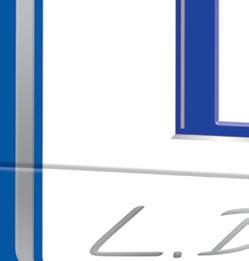







































What Does It Take to Craft the Secret Sauce?
FOODSERVICE VETERAN Ben Lucky opened his keynote presentation at the 2024 Convenience Foodservice Exchange event with a deceptively simple question: "Who are you?"
He urged attendees to give the question serious consideration. Identity has become increasingly relevant as the foodservice category grows more important to the convenience channel and brands try to forge distinct foodservice identities to stand out from the competition.
Building a successful convenience store foodservice program can be extra tricky in an industry where company executives may have an "oil company mentality" in which waste is never a consideration — even if waste is a necessary aspect of offering enticing food instead of microwave-on-demand products that won't bring customers back for a return visit.
Having a plan based on the right information and an internal formula to offer quality and increase profits can combat the no-waste "fuelification" of foodservice, which Lucky said will result in long-term failure even if it avoids losing money in the short term.
To put their best food forward, retailers need to have their own ingredient lists and recipes or rather, processes and outlines of what it is they plan to achieve with their program. Lucky drew from a conversation with fellow foodservice expert Richard Poye, former vice president of merchandising and foodservice at Atlanta-based RaceTrac, to describe the steps operators should take:
• Start with a defined vision and mission statement.
• From there, add highlights, differentiated services and products that are relevant to the target market.
• Once these are established, brands have a platform to create a content strategy toolkit.
Operators should strive to get credit for the quality of their program. Attributes such as flavor, texture, aroma, visuals, the sound of the kitchen, naming and photos all contribute to the impression of

a differentiated experience, which in combination with a good price and value will determine satisfaction, leading to retrial and a loyal following.
"You want to know your market and be able to fill a void. If everybody's doing chicken and you want to do chicken, what's going to set you apart from the competition in terms of the convenience stores?" Lucky posed. "Now, there's Slim Chickens, there's Dave's Hot, there's Raising Canes, there's all these guys."
The thing that makes the difference could be tasty add-ons or condiments. Customization is an easy way to differentiate. "Give 'em something to customize your food with, even if it is [just] a hot dog,” he said. “Maybe you get with a really good vendor that has a fried jalapeño or a fried pickle condiment that you could put on top of that hot dog.”
Once foodservice leaders know what they want to do and how they want to do it, Lucky's advice is to stay the course and refuse to deliver anything less than the quality they planned for.
"The choice is yours. You have the data," he said. "So, you need to stand up to those people that are trying to push you in the crappy-chicken way, and then you choose to thrive. And I say, thrive."
Identity is increasingly relevant as the foodservice category grows more important to the convenience channel, Ben Lucky emphasized.

Charting the Journey to Foodservice Excellence
AS THE CONVENIENCE store foodservice industry matures, it's not difficult to identify multiple retailers that offer gold star programs that serve as both inspiration and sources of useful insights. A decade ago, it is unlikely that Murphy USA Inc. would have been among them — but everything changed when it buckled down to make serious investments in food and beverage.
The company's journey from "a pretty basic gas station foodservice program" to the Gold Medal Foodservice Innovator to Watch in CSNews’ 2024 Foodservice Innovators Awards started with asking questions, according to Shawn Barnes, former director of foodservice for El Dorado, Ark.-based Murphy USA Inc./QuickChek.
"The first thing it looked like was me sitting in the office by myself. It is COVID and there was no department," Barnes recounted during a fireside chat with CSNews Editorial Director Emeritus Don Longo. "We were asking a lot of questions. What did we want to be? What did we want this brand to stand for?"
After bringing on "two of the best category managers we could find," Barnes
said he and his colleagues determined what worked for Murphy USA and what didn't. Then, in early 2021, the company acquired Whitehouse Station, N.J.-based QuickChek, which was already known for its high-quality food and beverage program and strong customer following.
"The formats couldn't be more different," Barnes recalled, explaining that the deal brought exponential growth to the "small but mighty" food and beverage team at Murphy USA, "not just by count of employees, but real expertise from space planning."
Today, while Murphy USA branded stores still differ from QuickChek locations in layout and menu, the company has significantly benefited from QuickChek's foodservice expertise and its own "laser-focused" initiative.
"We've gone from a program that was largely fountain and roller grill, one size fits all across the country, to eliminating products and platforms that weren't working. We made things more efficient and fit for purpose,” Barnes said, noting that one of the first eliminations was its roller grills.
Murphy USA has leaned into offering best-in-class frozen dispensed beverages with exclusive, cobranded frozen drinks, while also working to evolve its cold case through higher-quality selections and different meal occasions, with a particular emphasis on snacking to meet the needs of customers who come to Murphy USA for a quick fuel or tobacco occasion.

While technology and new offerings have contributed to the company's recent foodservice success, Barnes observed that even very basic and practical improvements can make a significant difference if they were previously overlooked.
"Even though we're primarily freeze-andthaw on the Murphy USA side for our grab and go, there's an organization that has to be done. We weren't any good at that," he said. "We're going forward being much more thoughtful on how we put out our condiment stations in the front. ... We moved the customer away from the wall where you're dispensing the liquid to help that churn and go faster. In our higher dayparts, we've introduced queuing blocks. There's a lot of learnings at this point, from an operational perspective, that we've really been able to put in place that are going to serve as the building blocks."
CSNews Editorial Director Emeritus Don Longo (left) and former Murphy USA Foodservice Director Shawn Barnes discussed the retailer's foodservice journey.





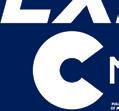





Building Customer Engagement to Build Foodservice Profit
IN TODAY'S C-STORE foodservice market, building digital connections with guests is key to long-term success. Multiple retailers discussed the importance of a multifaceted engagement strategy during a CFX panel titled "Building Engagement — From Innovation to Communication," moderated by Ed Burcher of the Business Accelerator Team.
Ryan Krebs, director of food and beverage at Savannah, Ga.-based Enmarket, described how his company's Enjoy Rewards loyalty program directly rewards people for being core customers.
"The loyalty program is attached to getting free food items, so the more you frequent the store, the more free stuff you get," he said. "It's kind of neat because most people walk up and they're surprised that they're actually getting it.”
A key benefit of Enjoy Rewards deals is that customers can sign up and immediately get the benefits of a current


Panelists shared how building digital connections with their guests is key to long-term success.











































promotion. "So, if someone wants to get something free, it's a perfect opportunity for our employees to encourage them to sign up and then on the spot, they can enjoy those free promo items," Krebs said.
Todd S. McFarland, former vice president of merchandising/marketing/digital at Louisville, Ky.-based Thorntons, said c-store chains should offer rewards that are good at any location and, ideally, customized to the individual customer. To retain loyalty members once they have signed up, he recommends retailers offer regular special pricing, recurring deal days and rewards as thanks for purchases. The goal should be to "surprise and delight," according to McFarland.
Mendy Meriwether, director of fresh food and beverage at Media, Pa.-based Wawa, shared how the retailer believes personalization is critical to building great customer relationships and has seen significant growth since rolling out personalization efforts. The goal is to match the right customer with the right
"The more you frequent the store, the more free stuff you get."
— Ryan Krebs, Enmarket
content at the right time, she explained.
C-store retailers can boost digital engagement by getting creative on social media as well, according to Babir Sultan, president and CEO of FavTrip in Kansas City, Mo. The brand's policy is to have just one post per week on social media about the company and its offers. Otherwise, FavTrip has fun with its videos, including some that feature commentary on shoplifters.
If company leaders feel out of the loop when it comes to what will play well on TikTok, Sultan recommends speaking with staff and offering them the chance to create content and receive bonuses. On FavTrip's social channels, "one of the videos has 4 million views and it's not by us, it's by [employees]," he said.
As a starting point, operators should just try walking through the store with video. "You'd be surprised with what you'll notice," said Sultan.































































































Foodservice Made Simple


Exploring the Evolution & Future of C-store Foodservice
MANY OF TODAY'S top convenience store foodservice programs come from chains that started out as dairies, including Cumberland Farms, Kwik Trip, Rutter's, Wawa and QuickChek.
Although their "humble beginnings" were very different than today, knowledge of industry history makes it easier to understand how they evolved into their current incarnations and developed their unique identities, said CFX closing speaker Jim Bressi, a classically trained chef and vice president of foodservice at Greenville, S.C.-based The Spinx Co.
A good location isn't the only important attribute consumers take into account when deciding where to shop. According to Bressi, CFX attendees need to take what they learned at the event and decide how the key takeaways fit with their competitive identity.
"The secret sauce is the determination of your uniqueness, your differentiation




The Spinx Co.'s Jim Bressi encouraged attendees to determine what their differentiation is in the marketplace.



































and those kinds of things," he said. "So, it is always uniquely yours. You're going to make it what it is. You have to find your own secret sauce ... you have to seek out what's going to win for you."
Bressi also shared some insights on "the fundamental changes" coming the industry's way, particularly those related to the foodservice and shopping habits of younger consumers.
"They don't really want to engage with us at a checkout. They want self-checkout," he said. "They want automated like the Amazon or whatever, the touch-free."
Data shows that 74% of shopping journeys begin with an Amazon or Google search, he noted.
Given new evolutions in payment technology and store formats that minimize payment friction, it’s a good idea for operators to keep an eye on changes in this area and consider what might work for them. But they shouldn't plan on opening employee-free stores.


"In my opinion, no way. I don't think you can ever replace people with robots," Bressi said.
He previewed an upcoming Spinx concept store that will replace a decades-old service station. The South Main Street store in Greenville will have numerous elements that are likely to become more common as motor fuel becomes less important.
He highlighted features such as the store's scratch kitchen, outdoor seating with a firepit and electric carts for delivery. "We do plan to scoot around town and deliver food. We're going to be a food-centric and small grocery [store]," he said. CSN
THE 2025 CONVENIENCE FOODSERVICE EXCHANGE WILL BE HELD MAY 8-9 IN DENVER.













































How Inline Plastics Stacks Up Foodservice Success
With the rise in demand for on-the-go food options at convenience stores, customers’ expectations for secure and safe packaging have also soared. In our exclusive Q&A with Inline Plastics, discover how their innovative packaging solutions fit this bill, prioritizing foodservice safety and giving customers greater confidence in their choices.
Q: How crucial is packaging in providing guests an overall positive foodservice experience at convenience stores?
A: Customers buy with their eyes, which means that packaging is the most crucial aspect when providing a positive foodservice experience. Clear packaging is a fan favorite as customers can see exactly what they are in for, and they can pick out what looks good to them. Nobody wants a half empty package because it looks like someone either got into it, or they are getting ripped off. Inline Plastics is focused on quality and transparency as they want consumers to have the best experience possible. For those who want the same for their customers, Inline Plastics is the best wingman.
Q: Consumers’ c-store foodservice purchasing habits have changed significantly in recent years. What packaging attributes are most urgently needed in today’s market?
A: In today’s food market, tamper protection technology is most urgently needed. Inline Plastics is known for their tamper-evident and tamper-resistant seal, ensuring that no one and nothing has reached the food before the consumer who purchased it. This seal is also leak resistant, guaranteeing no spills, just thrills! C-stores serve to provide convenience, so it is important that their products are consistent with that mission. Inline Plastics and convenience stores are a match made in heaven, and this is opportunity you don’t want to miss.
Q: As the foodservice category grows in importance at c-stores, so does the need for food safety. What types of packaging can make customers feel more confident about their prepared food purchase?
A: Customers feel most confident about their prepared food purchases when they know the food was prepared with them in mind. Inline Plastics is the overprotective parent of consumers in this industry. Consumers are all they think about. Constantly. Inline Plastics’ tamper protection technology consists of tamper-evident and tamper-resistant seals, guaranteeing customers that their food is as fresh as possible when consumed. No one wants food that has been touched by others. Inline Plastics’ protection prevents anyone and anything from getting inside prior to eating. Our ventilation designs ensure that the foods that need to breathe can breathe, like a yoga class for produce, keeping the food at its peak. Customers stay confident when purchasing prepared food in Inline Plastics’ packaging because they are interested in all the same things: freshness, safety, and quality. It’s a food packaging love story!
Q: Has the rise of third-party delivery necessitated any changes in c-store foodservice packaging?
A: Third-party food delivery services are increasingly popular because who wants to pause the season finale of Presumed Innocent when they can have a burger delivered to their couch? To

ensure customer satisfaction and the perfect burger, c-store foodservice packaging has developed greatly, and Inline Plastics is part of that. When ordering a hot meal through third-party delivery, our Safe-T-Chef® leak resistant seal ensures that your burger juices don’t leak out and you get the flavors you paid for. The tamper-evident and tamperresistant seal provides confidence that no one got to consumer’s burger before he/she did, while the resealable feature allows them to save the other half for later when the cliff hanger strikes and they need to stress eat. Safe-TChef® is also microwavable for when the burger needs to be reheated. Though if a burger is not their thing in times of stress, and they want something cold- that doesn’t require microwaving- our Safe-T-Fresh® products feature all the same great benefits.
Q: What are the biggest missteps that convenience foodservice retailers must avoid when it comes to packaging?
A: Inline Plastics has positioned itself as a leader in convenience food packaging by addressing common frustrations, including the constant battle between consumers and plastic wrap. Inline Plastics produces all products with a user-friendly tear-strip that makes opening and resealing packages easy for everyone. With clear Safe-T-Fresh® and Safe-T-Chef® packaging, customers are provided with the convenience of transparency, allowing them to see what exactly is in the packaging while saving time not having to read labels. The tamper protection technology, including a leak resistant seal, assures all customers that the food has remained safe and fresh through the supply chain, eliminating concerns of contamination. By combining ease of use, visibility, and safety features, Inline Plastics offers a solution that avoids common missteps while aligning with the needs of modern convenience foodservice retailers and customers.




That’s Cool: Bluebox Powered by Everest Transforms C-store Ice Sales
Americans purchase an estimated 2 billion pounds of ice annually, with convenience stores generating the bulk of sales.
But dollars are still left on the table if machines are broken or, worse yet, out of ice. Ben Gaskill, CEO of Everest Ice & Water Systems, talked with CSNews about his company’s newest system, tailored to C-store-specific needs.


CSN: What are the challenges convenience stores face with selling ice?
Ben Gaskill: Supply chain issues have impacted the ability of ice companies to deliver product. Ice is a quickly growing category in C-stores, expanding by 6% yearly, but many stores can’t get the product.
Chains can lose as much as $20,000 per store annually from out of stocks. If you are a 1,000-store chain, those out of stocks are a $2 million problem. Some convenience store owners were trying to bag their own ice. However, one of the major problems the industry faces is labor. Putting together a program that requires additional labor doesn’t help.
Everybody is asking for a solution— is there a better way?
CSN: What is Everest Ice and Water Systems doing to disrupt the industry and deliver a greater ROI for C-store operators?
BG: We have a separate C-store-focused arm of our company called Bluebox which is powered by Everest machines. The equipment, which we will showcase at NACS, has its own logo, branding, and look.
Another unique feature of Bluebox is our rental program, exclusive to C-stores, where you can rent a piece of our equipment and we do all the maintenance for it.
CSN: What are the benefits to retailers?
BG: Retailers love the fact our machines can be positioned outside their stores, freeing up valuable inside real estate. Our self-service machines accept most payment forms and can be integrated into POS systems with a QR code so the purchase can be made at the register, and the ice picked up at the machine.
Operators can make more profit with our program. A bag of ice delivered costs between $1.50 and $2 per bag which retailers mark up and take the profit. Our machine makes that same bag for 25 cents. That’s an 88% reduction in cost of goods!
Our machines also require less maintenance than the competition. We have a patented ice dispensing system, VersaVend, which uses a single rotating drum to agitate and dispense ice. What other manufacturers do with 10 or 20 moving parts, we can do with one. We are all about simplicity and with fewer moving parts, our machines are less likely to break and result in lost sales.
CSN: Do you have any programs to help smaller operators?
BG: We are the only company with a rental program for those who want to get into ice vending but don’t want to purchase equipment. You can buy the equipment from us, or we have a program that allows convenience store owners to simply rent it. Everest delivers and hooks up the equipment and handles all repair service work. Operators can have a fixed cost for their ice program, allowing them to make more profits.
Everest’s Quest for Big Blue at Every Convenience Store
Ben Gaskill, CEO of Everest Ice & Water Systems, believes the status quo no longer works for ice delivery systems. “It is ripe for disruption. It is inefficient, labor intensive, and has a big carbon footprint,” he said. “When people say, ‘It’s just the way it has always been done,’ we say we are going to change the way people buy ice in the future.”
To that end, Everest is delivering its Bluebox ice program, which solves the problems of out-of-stocks, maintenance downtime, and labor costs. “We want to see a Bluebox sitting in front of every convenience store so people know Bluebox is where to get their ice,” he said.
Contact us at everesticeandwater.com to learn more.


7-Eleven offers one-of-a-kind collections of unique apparel and accessories.
Anything But General
Taking a creative approach to the general merchandise category can grow sales and margin
By Danielle Romano
THE GENERAL MERCHANDISE category is in need of a reinvigoration.
General merchandise was one of the few categories not to benefit from rising prices in 2023, with total industry dollar sales falling 1% after three years of growth. Total unit volume declined 5%, continuing a multiyear streak and marking the largest volume drop since 2019, according to the 2024 Convenience Store News Industry Report.
While tobacco, beverages, candy and snacks are the categories most commonly associated with being purchase drivers at convenience stores and travel centers, industry experts say the general merchandise category is anything but general and the key to its success at convenience stores lies in retailers creating strategies that capitalize on the category's differentiation.
“Too often convenience and travel center retailers use a one-size-fits-all approach for their general merchandise assortment. While general merchandise sales might be smaller than other categories, it’s important to determine a subset of traits that can be used to segment stores,”
said Polly Flinn, founder and principal of Flinnstone Strategies, a Chicago-based business and retail strategy consulting firm. “Sales lift impact will be immediate when general merchandise shopping occasion traits sync up with what customers need.”
Putting customers’ needs first, 7-Eleven Inc. approaches the general merchandise category by examining which segments shoppers are looking for and what brands they like.
To understand customer purchase and behavior data, the Irving, Texas-based retailer with a network of more than 13,000 c-stores in the United States and Canada uses a variety of resources. The multipronged approach includes syndicated data, trade shows and its proprietary, state-of-the-art analytics platform C-Shopper. 7-Eleven evaluates what’s trending and reviews its assortment on a regular basis, according to Julie Trapp-Clark, senior product director.
“We aim to surprise and delight our customers. So, we aim to be in stock with our top items, and we differentiate our private brands with value and quality. We want the shopper to think, ‘I wasn’t expecting to find this in a convenience store,’” she told Convenience Store News
7-Eleven also offers one-of-a-kind collections of unique apparel and accessories on 7Collection, the retailer’s online merchandise shop. Past collections have included
FAST PAYS

fairway fashions that blend the brand's flair with golf culture, and festive holiday apparel complete with ugly sweaters.
Going Beyond the Basics
The general merchandise category is made up of products largely used for necessity, encompassing an eclectic mix of segments such as automotive products, batteries, hardware/housewares, sunglasses, toys and apparel. But that doesn’t mean a convenience retailer or travel center operator can’t be creative in their approach to general merchandise.
“Relevant and fun general merchandise growth strategies can lead to increased margin and basket sizes, and play an integral role as being a destination driver for their customers.”
— Polly Flinn, Flinnstone Strategies
“Too often, general merchandise is a forgotten category and retailers deploy a ‘set and forget’ approach,” explained Flinn, who previously held marketing and operations C-suite roles at bp and GetGo. “Relevant and fun general merchandise growth strategies can lead to increased margin and basket sizes, and play an integral role as being a destination driver for their customers.”
To maximize the category’s potential, c-stores must expand beyond selling the basics, according to Kristen Thaler, category manager at Temple, Texasbased distributor McLane Co. Inc. This could include offering unique, niche items not carried by other convenience store operators. “There are some travel stops that have a display area dedicated to iPhone merchandise, for example,” she pointed out.
When crafting a general merchandise set, Thaler suggests convenience retailers keep the saying “value is a virtue” in mind. “Value doesn’t always mean least expensive in the eye of the consumer,” she emphasized.
She provided some pointers on how to get the most out of general merchandise:
• Place cross-merchandise products throughout the store to drive impulse sales and create space on the shelf for seasonal and innovation items.
• Leverage the need for innovative and on-trend foodservice offerings to help bring customers into the store. “Offer top-selling categories with both private label and branded offerings to drive category growth,” she recommends.
• Drive store traffic with digital rewards programs and promotional offers.
The Private Label Proposition
As supply chain issues have subsided and purchasing sensitivity has increased, consumers have been trading down to lowerpriced products, buying smaller pack sizes and shifting to private label. As such, private label growth is essential for convenience retailers and travel center operators to grow sales and maintain margin, Flinn noted.
“Convenience retailer and travel center proprietary brands have much value to consumers,” she said. “Retailers should have the courage to extend them to all categories in their stores, including the general merchandise categories.”
Store brands reached all-time highs in both unit and dollar market share during the first six months of 2024. Unit market share was 22.9% and dollar market share was 20.4% as of June 16, according to new Circana sales data provided exclusively to the Private Label Manufacturers Association (PLMA).
Looking specifically at the 10 product departments that Circana tracks for PLMA, the general merchandise category posted a private label dollar sales gain of 2.2% for the 52 weeks ended June 16 vs. the year-ago period.
Several leading c-store and travel center chains either have in place or are ramping up strategic plans to boost their assortment of private label products. Retailers such as 7-Eleven, Lake Jackson, Texas-based Buc-ee’s and Oklahoma City-based Love’s Travel Stops are optimizing the opportunity to develop proprietary products that will further enhance brand loyalty, and so are distributors like McLane with its Consumer Value Products private label line, which offers a wide array of general merchandise products.
“We look at the full approach of private brands, beyond candy and chips. We aim to bring value to the entire store. For 7-Eleven, we plan to be even more aggressive around launching and testing new categories of private brands,” Trapp-Clark expressed. “The customer is moving so fast; we need to be nimble and react quickly. We want to maximize private brands. Not only do they bring a perception of value, but they’re cool now. And we want to lead the way.” CSN




1.45-inch extended wand helps keep fingers away from the flame Perfect for all lighting occasions
1.45-inch extended wand helps


Family Express offers car washes at nearly 50% of its locations.

Keeping the Revenue Rolling
In-bay automatic, touchless washes and subscriptions are dominating the c-store car wash space
By Tammy Mastroberte
WHEN IT COMES to high-margin profit centers in the convenience store industry, a car wash certainly ranks toward the top of the list, with the latest trends in the space involving equipment upgrades and subscription models.
“We have been offering car washes for over 30 years. We currently have car washes at about 50% of our locations,” said Ryan Fasel, director of marketing at Valparaiso, Ind.-based Family Express Corp., a chain of more than 80 c-stores that offers subscription options at its car wash locations. “With the continued addition of car washes at existing locations, and car washes being a key feature for upcoming new-to-industry sites, our goal is to offer car washes [at] the majority of our locations.”
There are certain trends in car washing that continue to pick up steam, including the change to in-bay automatic systems where the vehicle stays stationary in the actual structure rather than using a conveyor belt, and moving from brush to touchless washes.
“In-bay automatic is almost entirely the type of systems c-stores have across the
board. I would say 99%,” said Ken Underhill, director of marketing for D&S Car Wash, a supplier based in High Ridge, Mo.
Another trend gaining traction is car wash subscription programs. H&S Energy Partners, the Orange, Calif.-based operator of 170 c-stores, and Enmarket, the Savannah, Ga.-based operator of 130 c-stores, recently announced the addition of car wash subscriptions in partnership with marketing technology company Liquid Barcodes.
“A lot of c-store operators have chosen to jump on the bandwagon of subscriptions and simply put, it’s a no-brainer,” said Saurabh Swarup, general manager, North America and head of global sales at Liquid Barcodes, which has an office in Fairfax, Va. “Operators are seeing 90% margins and also seeing a 90% autorenewal rate.”
Equipment Trends
The days of the conveyor belt car wash are all but gone as the majority of convenience stores today are using in-bay automatic washes, which are available with brushes or touchless.
For years, brushes were the dominant model with around 80% choosing this over touchless. However, the last 18 months have seen a shift to 50-50, according to Underhill.
“I think consumers’ taste and preferences might be

guiding this trend,” he said. “Touchless has an advanced cleaning ability. [They] are a little more expensive over the brush — maybe $5,000 to $10,000 more — and also cost more to run in terms of water, energy and chemicals. You have to use more of all three to get it clean without brushes.”
At Family Express, the retailer has opted to offer its customers a choice, so at its newest car washes, there’s the option of a brush or touchless wash in a single bay. The customer can decide, according to Fasel, who noted that touchless is a priority with activating the wash.
“Touchless automation has become a major focus,” he said. “Giving customers the ability to activate the car wash without having to go inside the store, interact with a kiosk or roll down their car window has become increasingly popular. A significant number of cars we wash use touchless automation to activate the wash, and that number continues to grow every day.”
In addition to a touchless start to the wash, which happens via a mobile app, Family Express offers kiosks. As of now, 75% of the cars washed at its locations have some interaction with the kiosk, whether purchasing washes directly through it or entering a code for washes purchased at the fuel dispenser or inside the store.
“Right now, a dependable kiosk is a necessary feature of a successful car wash, but as touchless automation becomes more prevalent, there will be less reliance on the kiosk,” Fasel said, noting that touchless activation through a mobile app saves several steps vs. entering a code into a kiosk. “This leads to an easier and quicker process for customers, and they can also activate the wash without rolling down their window, which provides an added level of comfort — especially during colder months.”
Along with the actual car wash equipment, there’s been continued advancement in lighting features and sounds inside the bay. For example, the music and lighting can be customized to reflect what is going on with the wash cycle, said D&S’ Underhill.
“When drying, the lights could be red for hot, for example, and we are moving to the next level of sophistication for sound,

lighting and cycles,” he explained, pointing to a company called Carwash FX, which is a cloud-based digital marketing attendant that can add voice sound effects, music and more to a car wash experience.
The Subscription Model
In the c-store space, subscriptions have become popular for a variety of offerings, such as coffee, fountain drinks and now car washes. Several chains offer different tiers of subscriptions, including unlimited washes — which at first might seem like a revenue loss, but actually end up the opposite.
For example, if someone normally comes once a month for a car wash, but buys the unlimited subscription and now comes three or four times a month, they often don’t just get the car wash. They will end up buying gas and stopping in the store for a coffee or sandwich.
“Unlimited usually has an asterisk that states 30 washes per month, for example, and many retailers offer a variety of plans, such as a basic plan, silver, gold or platinum levels, and users can upgrade,” Swarup noted. “If I have a basic plan, an app can prompt me to upgrade for an extra feature and pay an extra $2, which adds up to additional revenue as well.”
Family Express works with a company called Mosaic for its digital car wash platform, and its mobile app enables customers to purchase unlimited car wash subscriptions as well as individual washes using their personal mobile device.
Customers can activate the car wash via the Family Express mobile app.





“They can manage purchases and payment methods through their mobile wallet, earn rewards for getting their vehicles washed, and receive targeted car wash offers using advanced geofencing capabilities,” Fasel said.
Additionally, since the retailer offers both brush and touchless car washes, Family Express customers can opt for either a brush or touchless subscription plan, with the most popular being its Works Wash subscription. “It’s our top-end package with a traditional brush wash, though the touchless subscription is gaining popularity,” Fasel noted.
The chain combines digital advertising with discounts to drive subscription signups, along with targeted messaging through its mobile app, which he said has been “very successful.”
Car wash subscriptions benefit both the retailer and the customer, as the
“Right now, a dependable kiosk is a necessary feature of a successful car wash, but as touchless automation becomes more prevalent, there will be less reliance on the kiosk.”
— Ryan Fasel, Family Express Corp.
consumer is more likely to return to the store and purchase other items — plus, the recurring revenue the subscription provides — and customers feel like they are getting a deal.
“It’s really the reverse of a loyalty program,” said Swarup. “We call it locked-in loyalty because they have a card on file, have already paid for the service, and now just have to go and use it. This is true loyalty and will have customers going to your location over others.” CSN










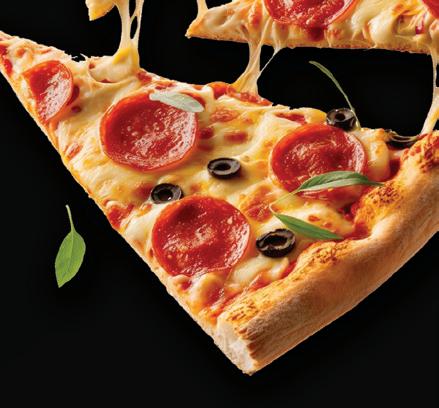























































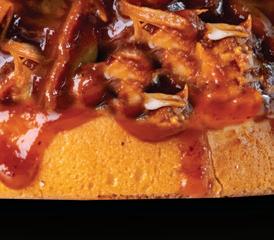







































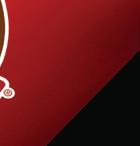































A Guiding Light
Convenience Store News' 2024 Technology Leader of the Year leans into tech as the foundation of its business strategy
By Melissa Kress
ONE YEAR AGO, Alimentation Couche-Tard Inc. (ACT) revealed a roadmap for growth with four beacons — or lighthouses — to guide the company’s way over the next five years.
Known as “10 for the Win,” the roadmap is steered by the Laval, Quebec-based company’s vision to become the world’s preferred destination for convenience and mobility, along with its mission to make customers’ lives a little easier every day.
As the company laid out in October 2023, the four lighthouses are:
1. Winning Offer, which includes winning in food, thirst and private label.
2. Winning Fuel, which includes winning with the business-to-consumer value proposition, the business-to-business value proposition and the fuel supply chain.
3. Winning the Customer, which includes building fans through loyalty, the digital experience and operations first.
4. Winning Growth, which includes new-to-industry sites, raze and rebuilds, and acquisitions.
At the foundation of these four guideposts is technology, according to Chief Technology Officer Ed Dzadovsky. “Technology is foundational to the 10 for the Win strategy. It is embedded into the bedrock supporting our strategic lighthouses,” he explained.
Coupled with the retailer’s Information Superhighway journey, which began in 2019, Couche-Tard is making great strides in its technology transformation.
It is for those efforts that ACT, parent company of the global Circle K brand, is Convenience Store News’ 2024 Technology Leader of the Year. This annual award goes to a technology leader (individual or company) who not only contributes to the success of their organization, but also to the advancement and growth of the convenience store industry as a whole.
















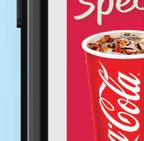
















































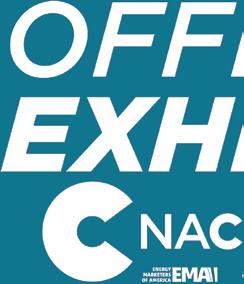


Pouring the Foundation
According to Dzadovsky, there are five key priorities around technology, each of which supports one or more of the lighthouses.
The first priority is operational technology. “We need to make sure the technology works in our stores every day — every card reader at every POS [point of sale] for every single customer,” he said. “That is priority No. 1.”
ACT operates in 31 countries and territories, with more than 16,700 stores.
Second is cyber-resiliency, making sure the company’s brand is protected and that Couche-Tard is resilient if issues arise inside its tech stack.
Third is building information technology (IT) for the future. “We’re in the middle of the digital transformation journey, but it’s going to require a different level of technology support moving forward, a different type of architecture and a different technology stack,” Dzadovsky said.
Fourth is Couche-Tard’s digital experience and digital acceleration — essentially how it is changing the customer experience to meet and exceed their expectations, and understanding their buying behaviors and patterns.
And last but not least is investment in data and analytics in the company’s core platforms, enabling the business to make data-driven decisions, whether it’s localized pricing, merchandising, inventory, etc.
It's a Journey
Couche-Tard dedicated itself to moving its technology forward when the company embarked on the Information Superhighway journey in 2019. At the time, according to Dzadovsky, the company’s technologies were working but they were not keeping up with the pace of technological advancements that its customers were expecting.
Simultaneously, the ACT Executive Declaration included a new commitment to innovation and investment in the improvement of its customer experience. “In order to act on this declaration, it was imperative for us to create a unified ecosystem that enabled easy integrations and reusability,” he explained. “This led to our development of our Next Generation Retail Platform (now renamed Information Superhighway).”
The cloud services API platform serves as a middleware that enables digital experiences and shortens time to market. As a

“Today, we’re not only changing the experience for Circle K. We’re actually driving and leading change in the industry.”
— Ed Dzadovsky, Alimentation Couche-Tard Inc.
result, Dzadovsky said, “We are able to limit vendor lock-in, avoid point solutions, and easily adapt and scale to what is next.”
Rather than creating a new integration for every single digital checkout solution — self-checkout, frictionless or ecommerce, for example — Couche-Tard is able to leverage the same Menu API (to pull down pricebook information) and Order API (to send orders through to backend systems). The retailer can integrate with multiple vendors and power different experiences without having to reinvent the wheel, the chief technology officer explained.
“This Information Superhighway [ISH] is our ‘secret sauce,’ and it allows us to remove complexities and connect disparate systems in order to bring data and information together in a way that is valuable to our business,” Dzadovsky continued. “Smart Checkout, our mobile app and our loyalty programs are just a few of the initiatives that are powered by ISH.”
Taking the Initiative
Part of succeeding with technology is not being afraid to take chances and try new things. Learnings come from wins and losses for all retailers, and Couche-Tard is no different.
In the win column is the retailer’s loyalty and self-checkout programs.
More than 7,000 Circle K and Couche-Tard stores offer Smart Checkout.




“Our loyalty programs have exceeded expectations. We were able to accelerate the rollout, and we’re now in more than 4,000 stores across 10 U.S. business units with Inner Circle,” Dzadovsky pointed out. “Smart Checkout is another one that has worked well.”
In June 2022, Couche-Tard partnered with Mashgin to install Mashgin Touchless Checkout Systems, branded as “Smart Checkout,” at more than 7,000 of its Circle K and Couche-Tard stores over a three-year period.
Other initiatives prove to be a mixed bag, such as Pay by Plate payment technology. First launched in Sweden in 2021, the solution offers a completely frictionless experience that enables customers to pay for fuel using sign recognition and a mobile app.
“Pay by Plate is a good example of a program that worked in one geography but couldn’t in another,” Dzadovsky shared. “It’s running successfully in Europe but when we tried it in the U.S., we found quickly that it wouldn’t work because of some intricacies with license plates not being on the front of cars here that get in the way of the technology working consistently.
“We also piloted multiple fully frictionless technologies, but ultimately found it didn’t fit well in an existing brick-and-mortar traditional cashier system,” he added. “The customers were apprehensive about it, worried about whether the system would work or if they were stealing.”
In the loss column is click-and-collect. As with retailers across all channels, the COVID-19 pandemic spurred Couche-Tard to roll out curbside pickup, but it did not take off.
“When COVID hit and everyone was worried about being able to open their doors, we moved really quickly to build a clickand-collect app and activated it at a couple hundred stores, giving customers an option to pull into a stall. But we found that in our channel, that just isn’t an option they want to use,” Dzadovsky recalled.
While the service has been successful for big-box retailers like Home Depot and Best Buy, it was not something that resonated with customers in the convenience channel, according to Dzadovsky. “We were a little surprised that the uptake was pretty low but, at the same time, it helped clarify and reinforce what our customers need and expect from us,” he said.
Looking Ahead
The one thing you can count on with technology is that something new is always around the corner. As Dzadovsky pointed out, there are several emerging technologies that tech executives find exciting: for example, the ability to leverage data to drive personalization, and ways to leverage artificial intelligence.
“But the most important things are the technologies that make a difference for our customers — that support our mission of making their lives easier, as well as for our employees,” he said. “The thing that drives us is when we can put a solution in our employees’ hands that makes their shifts a little easier and enables them to better serve and connect with our customers.”
As for Couche-Tard’s next steps, “we can talk all day about the really interesting and fun technology stuff going on behind the scenes, but everything we’re doing ultimately points to the customer and team member experience,” Dzadovsky said, adding that data and analytics are shaping the company’s decisions in new and better ways every day across the business.
“When I joined Circle K six years ago, the convenience industry was one of the last to be touched by digital transformation. There was a real excitement for the tech team, for our digital team, for our operators to be a part of something that was going to transform the industry,” he said. “Today, we’re not only changing the experience for Circle K. We’re actually driving and leading change in the industry.”
Couche-Tard will be recognized as the 2024 Technology Leader of the Year at the CSNews Technology Leadership Roundtable and Dinner, taking place Oct. 7 in Las Vegas, against the backdrop of the 2024 NACS Show. CSN
























The Rising Value of Value
As consumers look for more ways to stretch a dollar, it’s increasingly important for c-store retailers to highlight the value they offer
By Angela Hanson
THERE’S MORE THAN one reason to feel optimistic when taking a broad view of the U.S. economy. While challenges undoubtedly persist, unemployment is low, inflation is coming down and the economy itself appears resilient, according to National Retail Federation Chief Economist Jack Kleinhenz.
Individual consumers, however, have more than one reason to feel pessimistic. Inflation may be moderating, but its long tail continues to have an impact on day-to-day purchase decisions. Several retail industry experts have observed larger numbers of consumers who are living within a budget, seeking ways to wring the most out of every dollar and cutting back in certain areas to make sure they can still get what they most desire.
A deal is what they’re after these days.
According to the 2024 Convenience Store News Realities of the Aisle Study, which surveyed 1,500 consumers who shop a c-store at least once a month, 59% of participants cited the price of products as the No. 1 factor that defines a positive shopping experience for them — up 5 points from a year ago.
“Our data still indicates that consumers are making price-conscious decisions, whether that is trading down to value-based retailers or making multiple visits to different retailers.”
— Elizabeth Lafontaine, Placer.ai
It’s no surprise then that operators are rushing to demonstrate that the best way consumers can spend their money is with them — particularly in foodservice, which saw a bevy of summertime specials. In July, McDonald’s announced the extension of its $5 Meal Deal, while Krispy Krunchy Chicken debuted a $4 Value Meal. Fast-casual and quick-service restaurants (QSRs) also have explored a variety of limited-time offers (LTOs) targeted at cost-conscious consumers.



Life is a




Ball
INTRODUCING The LINDOR 3-pack: Discover A New Way To Indulge

It is clear that convenience store retailers must act purposefully in planning and promoting the value they offer. But one-size-fits-all deals won’t do the trick — operators must understand the details of what shoppers want, how they want it and what they’re willing to pay for it.
“Our data still indicates that consumers are making price-conscious decisions, whether that is trading down to valuebased retailers or making multiple visits to different retailers,” said Elizabeth Lafontaine, director of research at foot traffic analytics firm Placer.ai, headquartered in Santa Cruz, Calif. “However, we’ve seen pockets of traffic growth among specialty categories that are promising.”
As a concept, value is deceptively simple. Lafontaine noted that in terms of today’s consumers, the word carries two distinct definitions: the price paid or perceived savings on an item or during a shopping occasion; and the more intangible elements of the shopping experience such as convenience, service and product quality, all of which leads to overall customer satisfaction.
“We have strong promotions, which address the price-conscious consumer, and we have a great assortment of products defined by what the customer wants and expects.”
— Michael Bloom, GPM Investments LLC
“For today’s shopper, these definitions are somewhat interchangeable and can often occur in the same shopping trip,” she said.
Striking the Right Balance
For convenience retailers, the effects of ongoing inflationary pressures and high interest rates don’t have a single point of impact. Instead, they have “rippled through all areas of business,” according to Chris Hartman, vice president of fuels, advertising and development at York, Pa.-based Rutter’s, the operator of 80-plus c-stores.
“We’ve seen some customers making choices and avoiding impulse decisions, which differs from 2021 and early 2022. Tobacco is probably the biggest area that has been impacted across our industry, with customers trading down due to price increases,” he said. “However, our breadth of offerings at Rutter’s has helped mitigate some of the economic impact, as our customer base is very diverse.”
Offering affordable price points while not neglecting quality is important in the convenience channel.















































































































Hartman pointed out that although price point is an important component of value — particularly in foodservice — quality and speed of service also drive customer behavior. The goal, he said, should be to find a balance rather than race to the bottom.
“Customers have unique needs and therefore, our stores offer a variety of items at different price points with wait times that meet, or exceed, customer expectations,” he continued. “However, our mantra is to never sacrifice quality for price. That has resonated with our customers and helped us continue to see sales growth.”
Michael Bloom, chief marketing and merchandising officer at GPM Investments LLC, a wholly owned subsidiary of ARKO Corp., reported that customers are making fewer c-store shopping trips but buying more per trip. “This is a helpful indicator to businesses, so they can adjust their promotions and offerings accordingly,” he said.
The Richmond, Va.-based retailer makes it a point to emphasize different aspects of its value offer across the company’s network of 1,500-plus stores and 34 banners.
“Our approach to value as a concept also has several different meanings. We are very convenient, which adds value as customers don’t have to drive far, which adds savings. We have a loyalty program, which adds significant value
“Value is a perception that measures what you’ve given to what you’ve received. It can’t always be measured in dollars and cents, which is a common mistake.”
— Chris Hartman, Rutter’s
by way of price and flexibility for enrolled members,” Bloom told CSNews. “We have strong promotions, which address the priceconscious consumer, and we have a great assortment of products defined by what the customer wants and expects.”
Offering affordable price points while not neglecting quality is particularly important for ARKO considering that 40% of its store portfolio is in towns with populations under 20,000 comprised of medium- to low-income consumers.
“While our promotions have been one of the key driving factors in attracting repeat and new customers, what keeps them coming back is [us] identifying what customers want and need, not skimping on quality and taste, and our fast and efficient service,” Bloom said.
GPM Investments, which spent more than a year developing a new signature pizza program, made sure to use fresh ingredients to convey a sense of quality through taste, texture and appearance. It also had the strategic goal of using the pizza program to boost its loyalty program, which benefits non-foodservice categories as well.
“Our pizza has a very specific role,” Bloom said. “We purposely developed a great quality pizza at a great price, so customers would see the $4.99 price and enroll in our loyalty program, fasREWARDS, which enables them to pay $4.99. Without loyalty, the pizza is $7.99.”
Caption Rutter's stores offer a variety of items at different price points to meet and exceed customers' expectations.

Put an innovative spin
on impulse product displays.





patent pending rotor stop ensures display racks are easily adjustable
Revitalize displays and boost sales with Pole Star® Spinner Displays
Retailers can create numerous revenue-generating impulse buy stations in high-traffic areas that can accommodate a variety of merchandise. The Pole Star® Spinner Display features a streamlined design to reduce setup and install timeswith various merchandising options available to hold different product packaging types and sizes.
The Pole Star® Spinner Displays are perfect for boosting category sales inimpulse areas near checkout lanes and throughout convenience stores, withproducts such as gift apparel, snacks, candy, toys, and more.

The types of promotions retailers offer should vary in priority and type based on the individual operator, not the c-store industry as a whole, Lafontaine advised.
“For retailers who are recurring stops in their shoppers’ routines or compete directly with QSR chains in their local areas, value-focused initiatives may be the right strategy to build loyalty or attract new shoppers. For c-stores that operate as more of a specialty offering or destination for shoppers, focusing on driving value through the experience and product assortment might be a more fruitful direction,” she explained.
Feelings & Foodservice
While developing a strong value offer involves plenty of number crunching, retailers must not make the mistake of overlooking an equally important component: how customers feel.
“Value is a perception that measures what you’ve given to what you’ve received,” said Rutter’s Hartman. “It can’t always be measured in dollars and cents, which is a common mistake.”
For convenience store shoppers, value is often less about the final number
printed on their receipt and more about the emotional aspect of the transaction.
“A customer’s perception of value is more about a feeling than a purely measurable point of view,” Hartman emphasized. “Being able to provide that feeling of perceived value to customers can take shape through pricing, quality, selection and experience.”
He noted that the commonly held assumption that customers are paying a premium for convenience can actually benefit operators that offer more. “With that understanding, we are able to go above and beyond,” he added.
The ability to emphasize value is by no means exclusive to foodservice, but the category has more room to do so for practical reasons. And, while the convenience store industry provides value in a number of areas, foodservice is one where retailers truly differentiate.
“Because of the diversity of in-store offerings at c-stores — including tobacco, drinks, grocery, foodservice, etc. — we’re able to spread our costs, including labor, across many different categories,” Hartman said. “This allows us to keep the price-to-quality ratio at value-oriented retails vs. QSRs, who are forced to use food sales as a means of covering all of their fixed and labor costs.”
Shifting consumer perception of convenience stores is also opening up new opportunities through higher-priced food items that shoppers consider to be a value.
“There is a struggle over the value proposition within the convenience store channel. Consumers are used to paying incredibly low prices for extremely low-quality food, but that’s changing,” said




Elizabeth Sommer, customer marketing manager for Buffalo, N.Y.-based Rich Products Corp., noting that an increasing number of consumers view
c-stores as faster, easier foodservice destinations than QSR competitors. “However, in order for those consumers to return or continue to purchase food from c-stores, the quality of the product offerings now have to hit a baseline of satiating and satisfying.”

The breadth of offerings at Rutter’s has helped mitigate some of the economic impact of inflation.
































THE TOTAL ROLLER GRILL PACKAGE

of consumers who shop at a c-store at least once a month cited price of products as the No. 1 factor that defines a positive shopping experience for them.
Source: 2024 Convenience Store News Realities of the Aisle Study
Some c-stores will be better able to offer higherpriced food items than others based on their location and competitive strategy, but Sommer said it’s becoming increasingly feasible for c-stores to lean into the premiumization of beverages.
“Coffee retailers have set the standard, so paying a premium for a customizable beverage is fairly common and even sought after within certain demographics,” she said.
The convenience channel’s push to promote expanded menus in order to better compete with other retail sectors and foodservice operators makes promotions based on foodservice a logical step in the industry’s journey to offer better value.
However, c-store operators shouldn’t outright imitate successful promotions at well-known QSR brands without further consideration of their own brand identity.
“Most of the LTOs in QSR feel distinct to that chain, capitalizing on the core competencies of the restaurant and its unique customer base,” Placer.ai’s Lafontaine said. “Since c-stores have expanded their prepared food menus, each chain regionally has its specialty and reason to visit. Leaning into those key differences and local market needs will likely be more beneficial for c-store chains than trying to create broad-scale and sweeping promotions.”
Ultimately, though, the key to unlocking value does not lie in any one product category, but rather in truly knowing and understanding one’s customer base.
“Understand your customer,” Hartman said. “If you do that, you’ll know what types of food to sell and where your price points need to be, along with the quality and wait time expectations.” CSN


The Future of Fueling
From biofuels to electric vehicles, the forecourt continues to evolve
By Tammy Mastroberte
WHILE NOT MUCH has changed with combustible fuel over the past five years other than price fluctuations, options at the fuel island and on the forecourt are evolving. They include biofuels such as ethanol-based E15 and E85, as well as electric vehicle (EV) charging stations.
In fact, ethanol adoption has seen its greatest growth in the past five years — albeit mostly in the Midwest states such as Iowa, Missouri, Kansas, Illinois and Minnesota.
“We’ve seen the greatest growth in the past five years because of the adoption of E15,” said Cassie Mullen, director of market development at the Renewable Fuels Association (RFA), based in St. Louis. “It’s an easy fuel for the retailer to incorporate because of existing compatibility of infrastructure and because many major oil companies embraced the blend and are encouraging the offering as well.”
Meanwhile, electric vehicles only accounted for 1% of all registered vehicles in the United States as of the third quarter of 2023, according to an Experian Automotive Market Trends report, but they represent the fastest-growing car sales category in 2024, with a 7.6% share of the total U.S. vehicle market currently vs. only 5.9% in 2022, per Kelly Blue Book.
“Last year, we hit over 1 million electric
Electric vehicles represent the fastestgrowing car sales category in 2024, with a 7.6% share of the total U.S. vehicle market currently vs. only 5.9% in 2022.
Source: Kelly Blue Book
vehicle cars sold,” said Chad Bass, director of product management, EV charging for Dover Fueling Solutions, headquartered in Austin, Texas. “Retailers need to start planning now, especially with new builds.”
The Future of Biofuels
Today, E10 and E15 are seeing the most adoption at the pump in the world of renewable motor fuels. The number of sites selling E85, many in the Midwest, has grown in recent years as it’s a less expensive option — after the government subsidy — than E10 or E15, according to Ken Shriber, managing director of Chappaqua, N.Y.-based Petroleum Equity Group.






















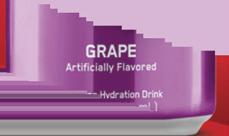




















































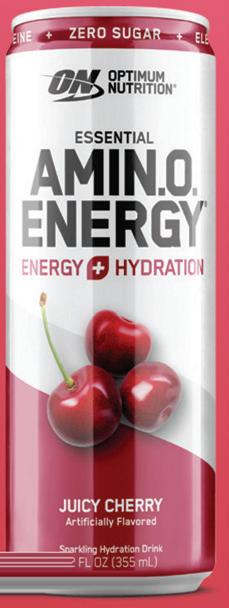






“California is blowing up with E85 because of the lower cost,” added RFA’s Mullen.
She noted that ethanol-blended fuel, in general, is most popular in the Midwest, but the association is seeing more nationwide expansion by the day. Not only is there a typical cost savings of 3 to 5 cents, but there’s also grant opportunities from the U.S. Department of Agriculture that certainly help to drive adoption, she explained. There’s incentives and grants available for retailers to change over to E15, biodiesel or E85 as well.
“The fact that the largest independent retailers, including Casey’s, Kwik Trip, QuikTrip, Sheetz and Kum and Go, are supporting and promoting the sale of E15 has spurred demand for other retailers to consider it as well,” Mullen pointed out.
For those retailers offering E10, the transition to E15 is not difficult because the equipment is largely compatible and they likely already have the infrastructure ready for it, she said. Many of the major oil companies have their own blends of it now.
To start offering ethanol-blended fuel or to prepare for the future, any new builds — or changes in equipment — can
“The fact that the largest independent retailers, including Casey’s, Kwik Trip, QuikTrip, Sheetz and Kum and Go, are supporting and promoting the sale of E15 has spurred demand for other retailers to consider it as well.”
— Cassie Mullen, Renewable Fuels Association
be an ideal time for retailers to set up the infrastructure so that the pumps can handle anything coming down the line, according to Steve Morris, owner and president of St. Paul, Minn.-based Retail Management Inc., which manages 20 stores.
“When we do retrogrades and retrofits, we are hedging our bets from an infrastructure standpoint to set up lines from all the tanks to all the dispensers because if there is a change or we need to put in a new product, we have the lines ready,” Morris said. “It’s a hedge because that is the time to build the infrastructure as it’s so cost prohibitive afterwards.”
The Future of EVs
Larger chains already have been installing EV chargers, and many are taking advantage of the funding offered by the National Electric Vehicle Infrastructure (NEVI) program, which pays 80% of eligible costs including acquisition, installation and network connection. The funding can offset the cost of installing chargers at new and existing locations.




“There are standards that have to be met, such as a minimum of four DC chargers, each one has to deliver at least 150 kw, the location has to be within a mile of a highway, etc.,” said Dover Fueling Solutions’ Bass. “Now that standards are set, each state has been providing funding.”
Each year, more and more convenience store retailers and travel center operators are installing EV charging stations at their stores, with many taking advantage of the grants available from the government to do so. And while electric vehicles are still a small percentage of the overall cars on the road in the U.S., the market continues to grow each year. Currently, California, Florida, Texas and Washington have the highest concentrations of EVs.

“We are starting to see more chargers in public view rather than off in a corner somewhere on the lot with poor lighting,” said Bass. “There is more of a focus on how to make the charging experience better, such as awnings, trash cans nearby, air stations for tires and more.”
Some retailers are installing their own network of EV chargers using grants and funds, while others are choosing to lease their space to charging companies. Bass pointed out, though, that there is little control over the experience when leasing.
“The natural progression is EV chargers will tie directly into the store pointof-sale, and there will be the ability to have ads right on the charger, place orders from in-store and more, like is seen at the gas pump,” he said. “EV charging is a captive audience and if it works well for someone pumping gas for five minutes, it will work great for someone who is stuck there for 25 [minutes] while charging, whether via an app or a screen on the charger.”
“EV gets a lot of press and for good reason. You can’t stick your head in the sand and ignore it. … You have to plan for it.”
— Steve Morris, Retail Management Inc.
Just as with biofuel infrastructure, new convenience stores being built can prepare for the addition of EV charging, even if they don’t offer it right away. A retailer can set it up so that they have a “conduit designed into the current specifications so when they are ready to implement, they can run the copper through and have the installation done quickly without having to tear up concrete in the parking lot,” Bass explained.
This can apply to site upgrades that include repaving the parking lot, too, said Morris, who recommends working with an EV provider to understand the necessary infrastructure and other needs such as the conduit and lines that must be buried in the parking lot.
“Bury it now and then leave it so it’s ready when you want to install chargers,” said Morris. “You don’t even have to put in a panel at this point, but just bury the lines.”
There’s varying opinions on just how quickly electric vehicles will gain footing. The way Shriber sees it, the EV will “have its day in the future, but it won’t be for a while.”
Love's Travel Stops started in the EV space in 2017 and has continued to grow its network.







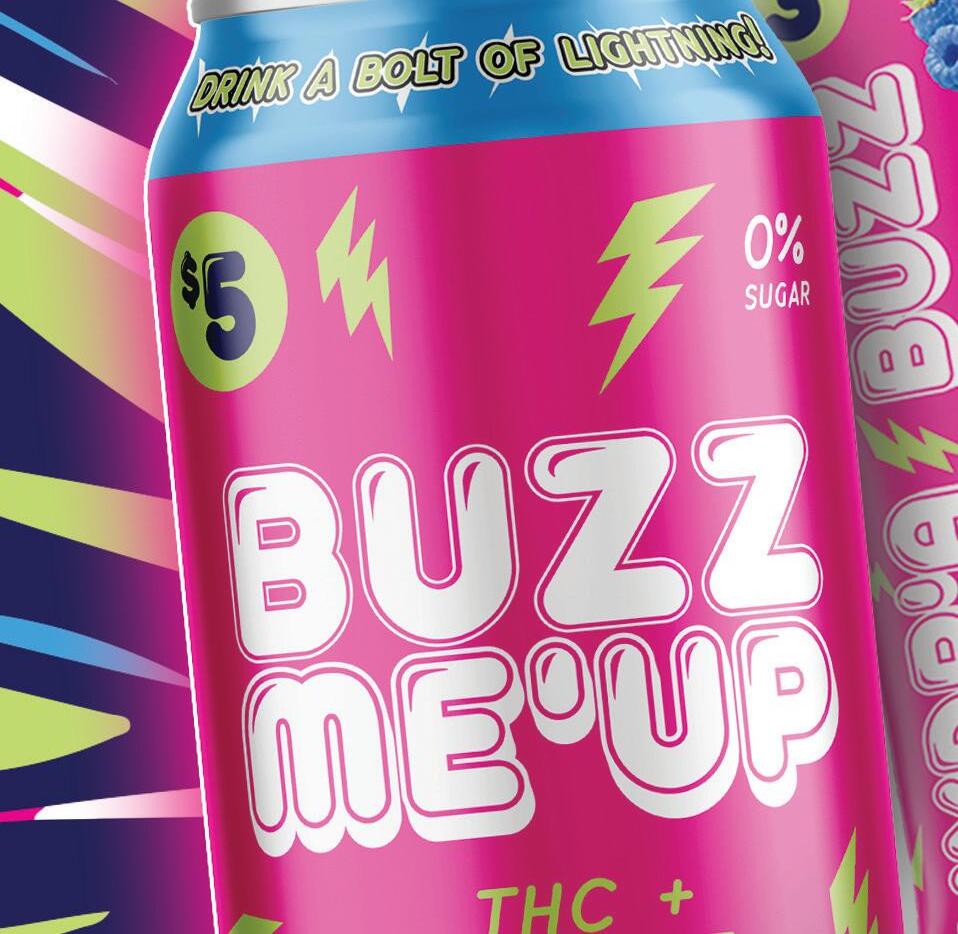































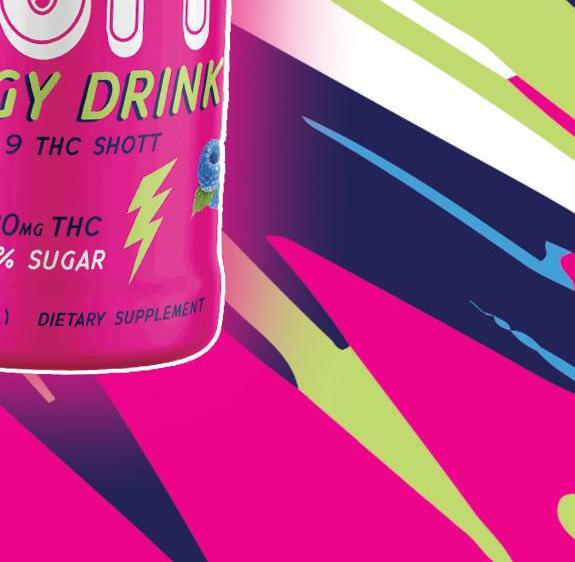






































With the average EV price tag of $52,000 out of reach for many Americans, greater adoption is constrained, he said. Additionally, people are holding onto their vehicles longer, for an average of 12 years, so he believes it will take a while to turn over the U.S. fleet.
“It will be 10 to 15 years before we see longer-range batteries and less expensive EVs and hence, before we see heavier traction,” Shriber reasoned.
According to the International Energy Agency, more than one in three new vehicles sold in 2030 will be electric, as more car manufacturers make electric vehicles and the price goes down.
“EV gets a lot of press and for good reason,” said Morris. “You can’t stick your head in the sand and ignore it. As of now, I have yet to find retailers that have cracked the code on how to make it profitable but at some point, we will. You just can’t ignore it. You have to plan for it.”
“It will be 10 to 15 years before we see longer-range batteries and less expensive EVs and hence, before we see heavier traction.”
— Ken Shriber, Petroleum Equity Group
Industry experts believe there will still be a mix of options in the future, from pure gasoline to ethanol-blended fuels to EV charging and more. Retailers must prepare for all possibilities.
The biggest barrier is infrastructure, so that is where retailers need to start planning.
“Any time I’m doing any construction or remodeling, I’m looking at how I can [put] infrastructure in,” said Morris. “If I’m replacing a dispenser, I’m running new lines, for example. If you are doing work, look at how you can build it out for what may happen in the future.” CSN
Worldwide, bp’s global EV charging business has 33,900 charging bays and aims to roll out 100,000-plus by 2030.









































































































































Achieving Operational Excellence
Training, mystery shops and self-service technology help improve store-level execution
By Tammy Mastroberte
SMART CONVENIENCE STORE operators are always looking for ways to improve store operations and boost customer satisfaction. Improving staff training, using technology for better execution at the store level, adding selfcheckout and ordering kiosks, and outsourcing expense management are all approaches being chosen by retailers today to achieve the goal of operational excellence.
“Everything we can do to try and make the employee better that fits our goal of total customer commitment is important to us,” said Michael Deal, human resources director at Moyle Petroleum Co., based in Rapid City, S.D., and operating 30 Common Cents Stores.
To achieve excellence in daily store operations, training store employees is essential — both during onboarding and on an ongoing basis.
“How are you advancing your employees’ skills and letting them know you care? When it comes to store execution and productivity, a productive team needs to care, and they need to know you care.”
— Tom Hart, Ready Training Online

Training also can include advanced learning to assist employees in growing within the company, which aids in retention.
“We use computer-based training over five days with initial hires, but then have different modules for ongoing training and for those who want to move up to second assistant manager, first assistant manager and store manager,” said Deal, who shared that the company partners with Ready Training Online. “Selection of employees and training is important because retaining is easier than recruiting.”
The biggest mistake c-store retailers make around training is focusing only on new hires and store managers, according to Tom Hart, director of business development and marketing at Ready Training Online, based in Elizabethtown, Pa. Ongoing training is crucial to maintain good store execution and offer employees the chance to advance their skills and grow within the company.
“How are you advancing your employees’ skills and letting them know you care?” Hart posed. “When it comes to store execution and productivity, a productive team needs to care, and they need to know you care.”
Whether it’s how to operate the store on a daily basis, prepare foodservice items, de-escalation training or advanced skills such as category management for store managers to better understand a planogram, having a central training program ensures that all employees are on the same page no matter what location they work at or in what state, said Hart.
“We operate in four different states and have four different training directors who do recruiting and hiring, but they train the same way with the same curriculum to give us a consistent brand from location to location,” Deal said, explaining that the retailer does all its
“We operate in four di erent states and have four di erent training directors who do recruiting and hiring, but they train the same way with the same curriculum to give us a consistent brand from location to location.”
— Michael Deal, Moyle Petroleum Co.


Common Cents Stores developed custom training videos for the rollout of its new pizza program.






































































































































































Self-service devices can save labor, as well as increase e ciency and customer satisfaction.
training at the store level with employees paid for their time.
While Common Cents Stores has set modules for training, the chain will add training as necessary and as it becomes available. The retailer also creates its own training.
“We have done a lot of custom videos and had the Ready Training team come out and film as we rolled out our new pizza program to train employees how to make the pizza,” Deal said. “They took our handwritten instructions and made a voiceover for the training videos.”
In addition to training, Common Cents utilizes its loss prevention video systems to do virtual mystery shops and then rewards employees with cash incentives for great customer service. Every employee is mystery shopped within the first 30 days of employment and then quarterly after that.
“Our loss prevention manager mystery shops all 450 employees through the video cameras, and he does about 100 per month, including age-compliance shops to make sure ID is requested,” Deal noted.
Saving Labor With Self-Service
After the COVID-19 pandemic hit and labor issues abounded, many c-stores turned to technology for help, including self-service devices. Today, they are widespread and accepted by many consumers. These devices not only save labor, but also increase efficiency and customer satisfaction by eliminating lines and allowing customers to exit the store faster.






PHARMACEUTICAL GRADE

















Premier Manufacturing is excited to introduce NIC-S®. Premium tobacco-free nicotine pouches backed by extensive scientific research, made with pharmaceutical grade nicotine, and is setting a higher standard for nicotine pouches.




PHARMACEUTICAL GRADE NICOTINE






LONG



6 FLAVOR PROFILES WITH 3 STRENGTHS (3MG, 6MG, AND 9MG)




PREMIUM SOFT POUCHES




































NIC-S® Born in Sweden


















































































Temple, Texas-based CEFCO Convenience Stores, operator of more than 190 locations, added in-store kiosks for foodservice ordering in partnership with software company Reji LLC and Olea Kiosks, eliminating the need for an employee to take orders.
“One of the big challenges in a c-store is labor, and they are often short on store-level employees, so the kiosk allows for self-ordering and while the customer waits for the food, they can shop the store,” said Reji CEO Frank Yoder.
At its CEFCO Kitchen locations, the retailer prints out a receipt with a barcode for the customer to take to the checkout and pay. C-stores that do this offer their customers the opportunity to walk around the store and pick up other items while they wait, which they may not do if they already paid at the kiosk, noted Yoder.
“Kiosks have been proven in the QSR [quick-service restaurant] environment

“We have seen for c-stores, the ticket lift is higher when they order through a kiosk — in some cases, by 20-30%.”
— Frank Yoder, Reji LLC
and we have seen for c-stores, the ticket lift is higher when they order through a kiosk — in some cases, by 20-30%,” he added, explaining that it is more guilt-free for customers when they order through a kiosk and add extras. The kiosk also prompts the customer to add on items.
Managing Operating Expenses
Every convenience store owner has numerous expenses to keep its stores operating, whether it’s utilities, waste and recycling management, pest control or uniform rental.
When it comes to operations, an area where c-store operators can push more money to their bottom line is expense management. Many are paying hidden fees without realizing it.
“We call it a ‘good contract, bad deal’ with some of these


ACTIONABLE INSIGHTS & CONNECTIONS POWERING BUSINESS GROWTH
EnsembleIQ is the premier resource of actionable insights and connections powering business growth throughout the path to purchase. We help retail, technology, consumer goods, healthcare and hospitality professionals make informed decisions and gain a competitive advantage.
EnsembleIQ delivers the most trusted business intelligence from leading industry experts, creative marketing solutions and impactful event experiences that connect best-in-class suppliers and service providers with our vibrant business-building communities.




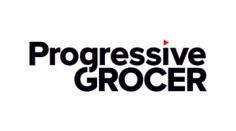




























Top Women in Convenience awards program will recognize the integral role women play in convenience retailing. Women will be honored from the retailer, wholesaler and supplier communities in four different categories:



• Women of the Year
• Mentors








• Celebrate and network with leaders in the industry at this inspiring event
• Meet with our attendees. Attendees will include the 2024 Top Women in Convenience winners, retail colleagues, manufacturers, distributors, key industry associations, industry luminaries and thought leaders and solution providers



















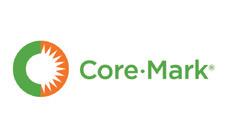

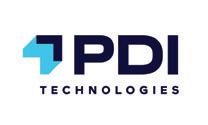




















• Establish stronger retailer relationships







• Create a positive impression of your brands among existing and prospective business partners












suppliers because they will often turn it into a bad deal by constantly adding other charges to make them more profitable,” said Rich Young, president at Fine Tune, a cost reduction consulting company based in Chicago.
He also noted that there is often a disconnect within c-store organizations between sourcing and procurement, who signs a contract, operators in the field, and accounts payable.
“There are sneaky ways suppliers will fatten their margins and profit, such as container overfill for the waste collector. This is often left to their discretion, so if a trash bag is spilling out over the top, they might mark that down as an extra percentage charged on the bill,” Young said. “There are also unwanted service increases, such as a supplier changing to a name brand vs. off-brand material.”
Using proprietary software, Fine Tune works with c-store operators to renegotiate a contract if necessary, and to find and fight the ways suppliers add
“We call it a ‘good contract, bad deal’ with some of these suppliers because they will often turn it into a bad deal by constantly adding other charges to make them more profitable.”
— Rich Young, Fine Tune
to the bill. The company works on a contingency basis and takes a shared percentage of the spend decrease based on its services.
This is especially important for chains with a larger number of stores and those operating with leaner staffs that don’t have the time to go line by line and store by store.
“If someone has 58 locations, for example, that is a lot of line-by-line items that could be unsustainable for a human,











































































































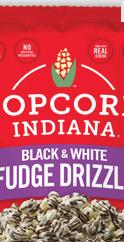























































































































































OPPORTUNITIES TO IMPROVE COMMUNICATION
Convenience Store News' second Future Leaders Learning Lab webinar provided practical techniques to become a more effective communicator
By Danielle Romano

EFFECTIVE COMMUNICATION is an essential building block for success. From interacting with your boss to coordinating with your team, you need to know how to clearly communicate and avoid costly misinterpretations.
"So often we think that we're communicating when in fact we're not. We're having these gaps and the opportunity for miscommunication is ripe and rampant in our professional lives," said Megan Robinson, founder of E Leader Experience. "Something that you said that someone interpreted differently, something that you said that never got landed and never got taken seriously — all of those are opportunities for us to improve our communication."
SCAN THE QR CODE BELOW TO REGISTER FOR THE REMAINING FUTURE LEADERS LEARNING LAB WEBINARS:
SEPT. 11 AT 2 P.M. ET Getting the Best Out of Your Team
NOV. 7 AT 2 P.M. ET Unlock the Power of Mentorship

Robinson explored practical techniques individuals can use to enhance clarity and coherence in their communication practice as she presented Convenience Store News’ second Future Leaders Learning Lab webinar on June 18. The quarterly webinar series aims to give participants techniques and tools they can use to take their careers to the next level.
To help participants understand what is happening during the communication process, Robinson broke down the communication model:
1. Message/sender — The communicator has something he or she would like to say.
2. Encode — The sender chooses the words to define the message and packages it up.
3. Channel — Once the message is packaged up, what channel is going to be the most appropriate to deliver it? (i.e.,
an email, a phone call, in-person, etc.)
4. Decode — The message is received and interpreted.
5. Recipient — The recipient unpackages the message and receives the information.
"Everything that has a message in communication goes through this process. The challenge is there are many opportunities for mistakes and pitfalls and miscommunication," she noted.
One of the foremost challenges for every communicator is that we all have a certain amount of perspective and bias that we're putting into a message. When you're encoding, you're naturally making a lot of assumptions on what the other person knows or doesn’t know. Those receiving the message will have their own perspective and interpretation of the message, so feedback from the recipient is critically important.
"Without feedback, you have no idea what the other person is thinking or what it is that they took away from a conversation. You're opening yourself up to misinterpretation. So, asking for that feedback, asking for that confirmation, that clarity and alignment is what's really going to improve your communication very quickly," Robinson advised.
She encouraged participants to think of past conversations where they would have wanted to improve their communication and pinpoint the breakdown moment.
"When you're communicating, you're going to have to make some assumptions. You're going to be able to have an opportunity to get clarity. But most importantly, you're going to have some trial and error," she said. "If you go through the whole model and you get that feedback, you'll identify where those gaps are, where you need to be more clear and what assumptions the other person is making."
The Future Leaders Learning Lab is a new element of CSNews' Future Leaders in Convenience (FLIC) program. Now in its seventh year, FLIC is designed to help celebrate and develop the next generation of c-store industry leaders. CSN
Megan Robinson















Respect Is at the Core of Love’s Award-Winning Culture Employee resource groups and culture tours keep the company connected
By Danielle Romano
LOVE’S TRAVEL STOPS is committed to having a world-class culture. This is evident by the company’s No. 1 ranking in Indeed’s 2023 Better Work Awards, which recognize organizations that are prioritizing work wellbeing and building toward a future of better work. With this distinction, Love’s beat out major retailers such as Nike, Microsoft and Apple.
Commitment to inclusion and diversity (I&D) is a key component of Love’s culture and has been a core tenant of the family-owned and -operated business since its founding in 1964. From employee resource groups (ERGs) to culture tours to community giving, Love’s I&D efforts impact nearly 40,000 team members in North America and Europe across 642 locations in 42 states.


Jenny Love Meyer, executive vice president and chief culture officer of Oklahoma City-based Love’s Travel Stops, recently spoke with Convenience Store News about the retailer’s award-winning culture and how its I&D initiatives factor in.
CSN: What makes Love’s company culture award-winning and why is having a strong company culture so important?
LOVE MEYER: Not only was the organization started by my dad, but the culture was, too. Though he passed away last year, we’re [as a whole organization] really driven by a culture of respecting and taking care of each other. And so, there’s a couple of things that go into this. One is that the culture is lived not only by top leadership, but also by everyone else in the organization. It’s driven by everyday actions and importantly, as I said, driven by not only family but by senior leadership and leadership throughout the organization, as well as team members to continue to sustain it with an organization of really almost 40,000 folks.
CSN: Company executives routinely go on culture tours to gather feedback from field employees. Can you tell me more about that?
LOVE MEYER: As we think about our culture and the importance of keeping it alive, there’s a lot that goes into that. We feel as a family-owned business that we have a differentiator in a way that we can really scale and sustain a culture that really should be the North Star, should be that foundational element for everybody in the organization, both now and five or 10 years from now.
The way we approach team members, especially given that the reality is in the ‘70s, ‘80s, ‘90s my dad literally could hop in a car and visit all the locations. Well, fast
Culture tours help scale and sustain Love’s company culture across 642 locations.
Jenny Love Meyer

forward to today, the way that we approach team members and hear from them has to change given that we’re at 642 locations and growing. So, as we think about that, one of the things that we devised is culture tours and it’s a different way that I can go out and visit with team members across the organization. It’s purely a means of having a little bit of a structured setting wherein they let me know, “Hey, here are some suggestions.” And really it’s a path forward so that everybody can think about ways to improve the business. These are the folks that are close to the customer, so naturally I think they’re the ones that would have ideas on how to make things better for the customer but also how to make the organization better.
CSN: Can you highlight some of Love’s most valuable I&D initiatives to date?
LOVE MEYER: In terms of I&D initiatives, we became more purposeful in hearing from groups within Love’s. We talked about the culture tours, but this is really standing up employee resource groups as a way to hear from groups that are traditionally called underrepresented. So, we have a women’s ERG, a Black ERG and a veteran’s ERG. We’re using these groups as a way to elevate the respect part of what we’re doing within Love’s. We’re excited about those, but know that’s one part of our I&D journey.
CSN: Your I&D efforts extend outside of the company and into the community. Can you talk about some of those programs?
LOVE MEYER: One that we announced earlier this spring is a partnership with Oklahoma Sooners Women’s Softball (OU). I’d say that OU softball is one of the winningest programs in softball history. … One of the things we got to know of the team is their way of operating both on and off the field, and the values alignment with Love’s, pardon the pun, was strikingly similar. That was one of the prime drivers of our decision to give the $12 million gift toward Love’s Field, one of the largest philanthropic gifts that’s been given to women’s sports. But also, the way that we’ve been able to elevate women’s athletics through this donation.

We also announced this spring the Love Family Women’s Center at Mercy Hospital Oklahoma City. The 200,000-square-foot facility is able to better serve more women and the multifaceted care they need. There’s two other things: one is our years-long partnership with Urban League of Oklahoma City, and then for our 60th anniversary [this year], we’re doing a special donation to DonorsChoose. We’re able to donate $60,000 to DonorsChoose and that’ll fund 188 school projects at Oklahoma City-area schools. I am so happy and thrilled to be able to do that.
CSN: In your experience, what has the return on investment (ROI) been from your inclusion and diversity efforts?
LOVE MEYER: Yeah, it’s interesting. People talk about ROI a lot, rightly so. And I think what a lot of companies are realizing is that it’s hard to tie ROI directly to I&D. A lot of times people talk about metrics and numbers. And for us, we really think that it goes back to how we cultivate that culture statement of respecting and taking care of each other. Ultimately, we’re more focused on the outcome as opposed to the metrics that get us there and that’s helped us be successful for 60 years. I fully am optimistic and know that we’ll be able to get there and be able to be successful on our own journey, the same as we’ve done with other parts of the business. CSN



Love’s aims to cultivate a culture of respect and taking care of each other.




Cozy Convenience
Rusty Lantern Markets creates its next generation of stores, featuring unexpected elements
By Amanda Koprowski
At a Glance
Rusty Lantern Market
Opened: December 2023
Location: 1051 Auburn Road, Turner, Maine
Size: 5,400 square feet
Unique features:
Indoor fireplace with a plush seating area; outdoor seating around firepits; seasonal menu items inspired by New England; locally made baked goods, snacks and drinks
THERE ARE PLENTY of descriptive words that begin with the letter “C” that could apply to your favorite convenience store. “Convenient,” obviously. “Clean,” especially for bathrooms. “Courteous” for staff members. “Cozy,” though, isn’t likely the first word to spring to mind.
And yet, that seems to be exactly the feel that Brunswick, Maine-based Rusty Lantern Markets aimed for with its nextgeneration store design, which debuted in Turner, Maine, and has since been rolled out to two more locations in The Pine Tree State and one in New Hampshire.
CEO John Koch, who formed the company in 2015, noted that the next-generation stores were designed to underscore Rusty Lantern’s commitment to making its customers always feel welcome and glad they chose to visit. To that point, one of the most dominant features in the new builds is a functional fireplace, complete with a plush seating area and lounge chairs.
“We wanted a proprietary building design and floor plan to help differentiate the brand,” he said. “And while our décor stays true to palettes and textures and design elements, we’ve introduced more of our sentiment into the design scheme this time around.”
For slightly braver souls who want to enjoy the sun even during chilly Maine temperatures, there’s outdoor seating gathered around lighted firepits, which also serve to draw attention away from the more mundane parking lot, according to Koch. But the company didn’t just concentrate on creature comforts; practical concerns played a role in the design as well.
“We wanted to shine a light on our brand pillars which make [our customer commitment] a reality: fresh food made onsite, local and craft product selections, a fastidiously clean environment inside and out, and a great friendly team to bring it all home,” he said. “We’ve expanded the footprint of our kitchens to give our team ample room to hand-prepare fresh, madeto-order and grab-and-go meals for every daypart. Our local and craft-made retail merchandise has more prominence on the sales floor.”
The revised layout in each 5,400-squarefoot store is also intended to emphasize what Koch refers to as the “theater going on in and around the stores,” some of which is new and some of which isn’t. The chefs and kitchen staff wear restaurantready white coats as they cook meals for customers in a food prep area that now gives guests a better look at the work that

goes into an order. Customers can hear beans grinding with every bean-to-cup or specialty coffee that’s made. The tiled bathrooms are roomy, bright and always clean, with state-of-the-art hardware and touchless faucets and soap dispensers — along with fresh flowers to add ambiance.
“At the end of the day, the goal is to feel like you’re someplace out of the ordinary,” Koch said.
This philosophy extends to Rusty Lantern’s foodservice offerings as well, all of which are developed by the company’s in-house chef. In addition to the traditional breakfast, lunch and dinner offerings that consumers have come to expect from many c-store chains — such as sandwiches, burritos and pizza — the retailer strives to remain true to its New England roots. This means seasonal lobster offerings from Maine during the spring and summer (including, of course, lobster rolls) and butternut squash and turkey salads during the cooler months.
Similarly, many of the products Rusty Lantern sells are locally made by people in New England, including a wide range of baked goods, snacks and soft drinks. The stores’ beer and wine sections feature a large variety of Maine craft beverages, and the retailer’s coffee beans for its bean-to-cup and handcrafted espresso drinks are sourced by a Maine artisan roaster.
“Our retail merchandise team works tirelessly to find convenience items that are practical, for sure, but also to curate a collection of items that people will appreciate because of what they are and where they came from,” the chief executive said.
In the months ahead, more Rusty Lantern sites will undergo the rebuild process. A fifth store is already slated to be torn down and rebuilt from the ground up, and other new-build locations are in various stages of development. “We’ll keep growing the network,” Koch vowed.
The company also plans to continue working on its digital offerings, including an updated and more robust loyalty program. “We’ll soon have a generous loyalty program that will reintroduce our customers to the full nature of our offerings, and we’ll keep listening and reacting to what they ask for, what they say,” he continued.
So far, customers are impressed with the new store design and cozy offerings.



“I was approached on two occasions by customers who wanted to thank us for upping our game. Among other things, one said she loved the cozy seating area — ‘it showed we cared.’ The other said the outdoor area was ‘very cool,’” Koch recounted. “It’s great to hear that we’re doing things that make people happy. That’s the whole point, and I’m proud of our team for doing so well in making this happen.” CSN
The new layout highlights fresh food made onsite, local and craft product selections, and a plush seating area.





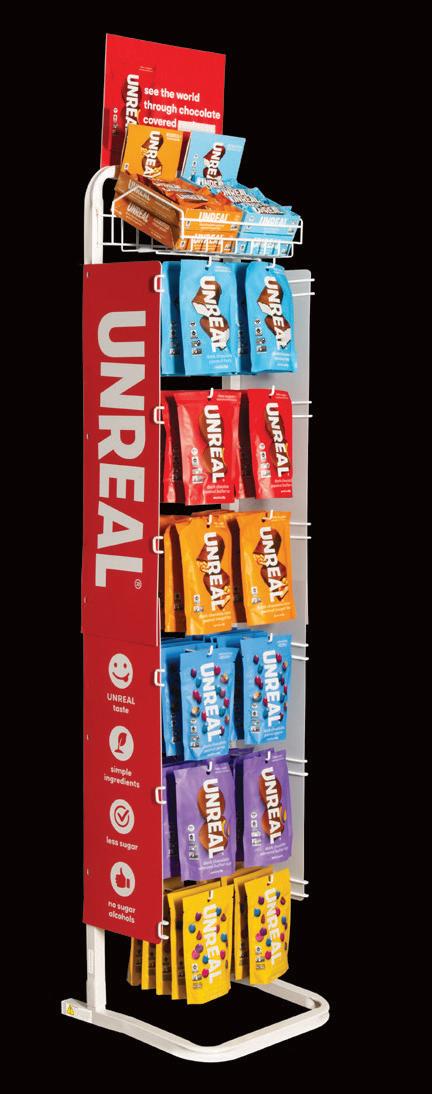




























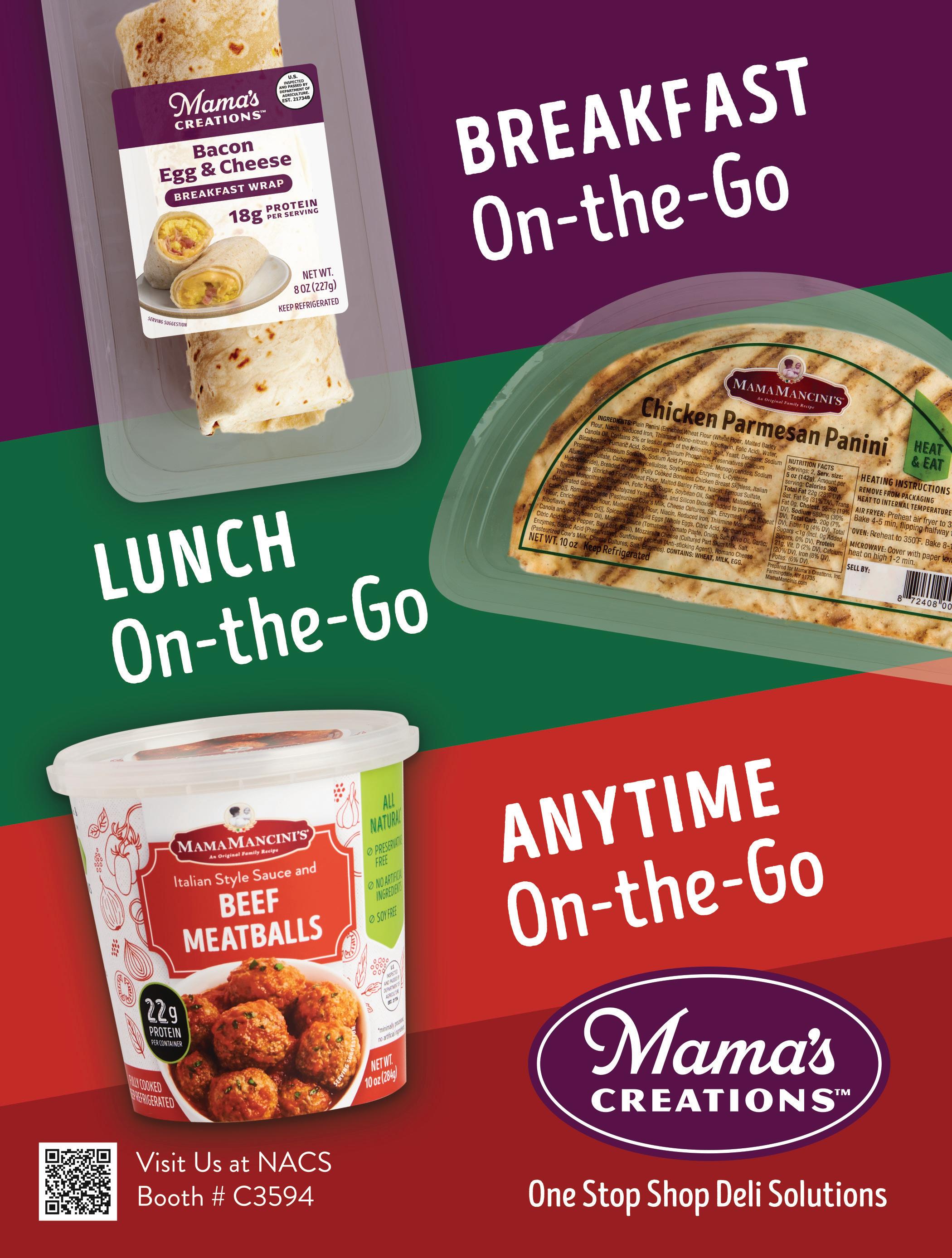

Non Sugar Beef Jerky












Food Service Oils








































Age Verifier


Sunglasses








Comparatively Speaking
Price is driving c-store customers to shop around for snacks and beverages
Many consumers today are living on a budget and assessing what they really need, vs. what they may want on impulse, with an eye on value. This is causing an already competitive marketplace to become even more of a battleground. According to the 2024 Convenience Store News Realities of the Aisle Study, which surveyed 1,500 consumers who shop a c-store at least once a month, shopping frequency is down across all channels. The study revealed:



The percentage of shoppers who say they visit a convenience store at least once a week declined 4 points compared to a year ago. Among weekly shoppers, the mean number of trips per week is 1.6, down from 2.0 trips in 2023.
How Often Do You Shop at These Types of Stores?
Among c-store shoppers, traditional grocery stores, mass merchandisers and online grocery retailers such as Walmart.com were the only competitive retail channels to maintain weekly shopping frequency year over year.
While c-store shoppers prefer to keep their tobacco, candy and dispensed beverage purchases within the convenience channel, packaged snack and packaged beverage purchases are more competitive with c-stores currently trailing both mass and grocery retailers.



Dollar stores, food delivery sites and grocery delivery sites saw the biggest declines.
Among those who do not buy packaged snacks at convenience stores, 68% cited that the channel's prices for these products are too high — up 14 points from a year ago.
Among those who do not buy packaged beverages at convenience stores, 73% consider the channel's prices for these items too high — up 13 points year over year.






